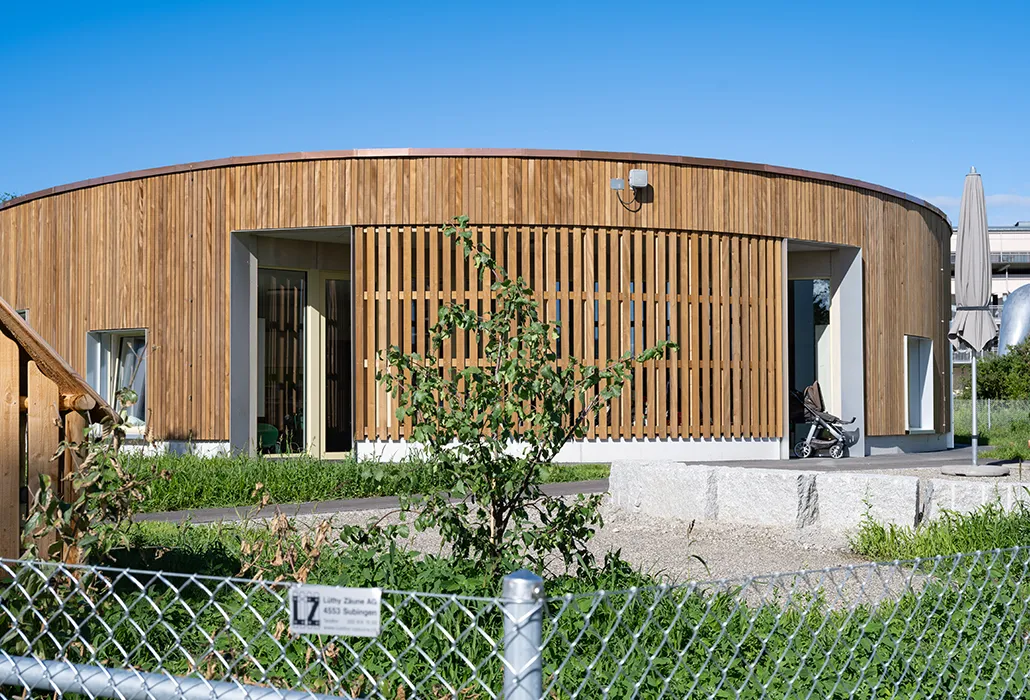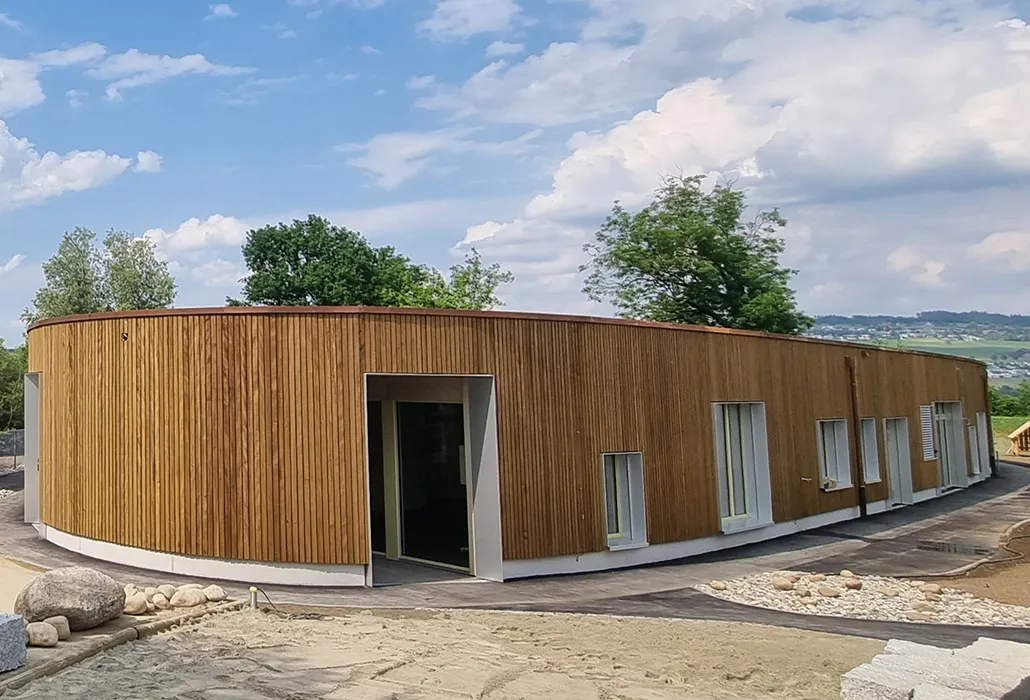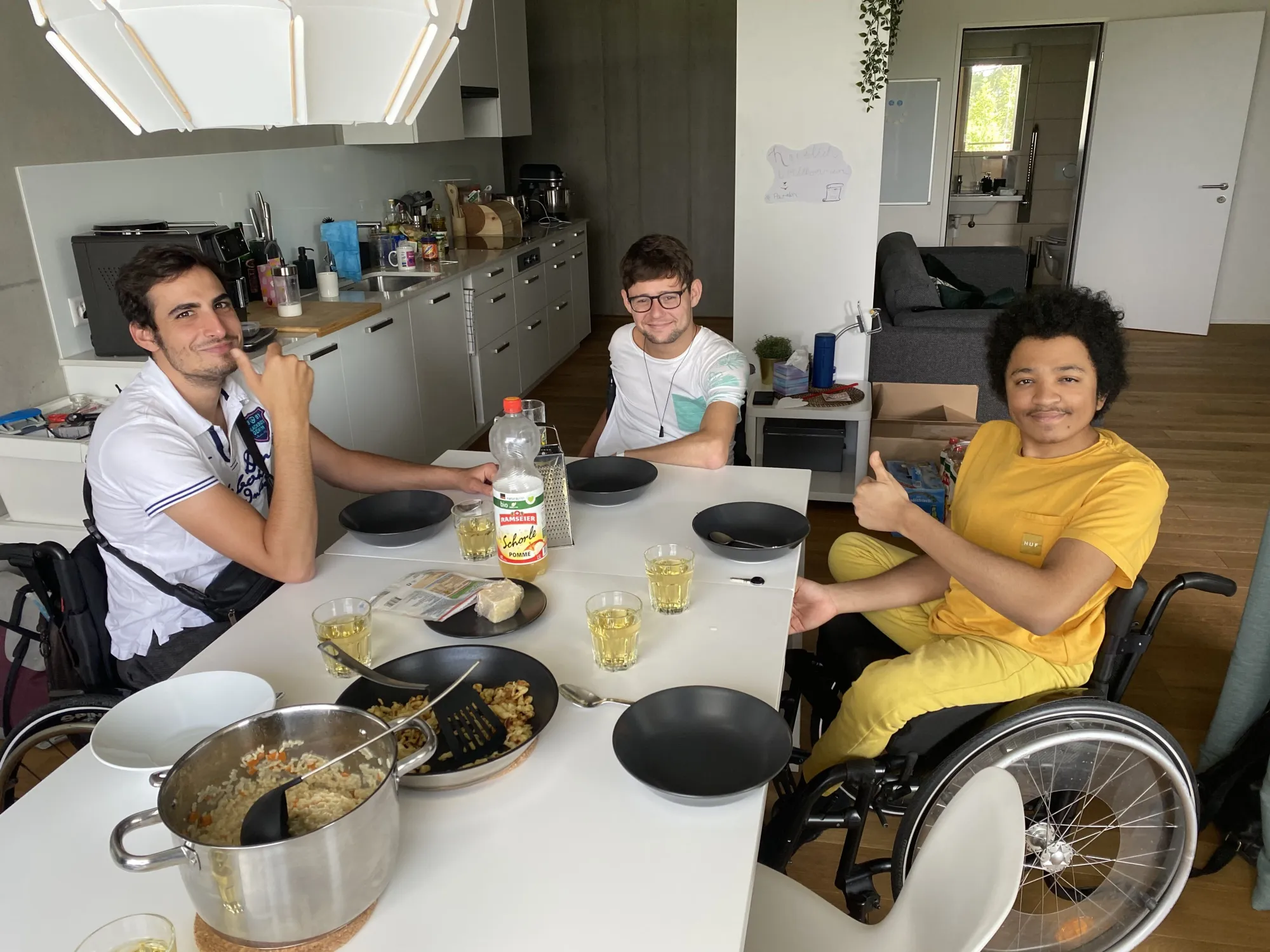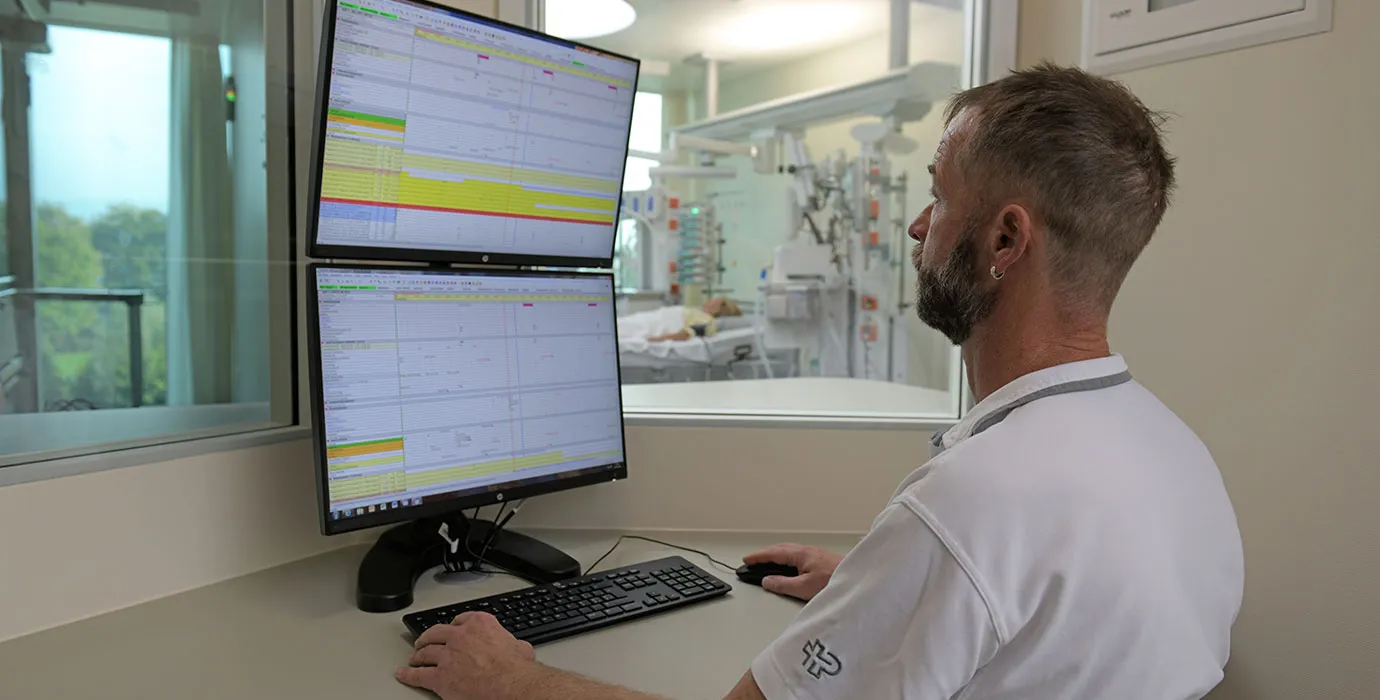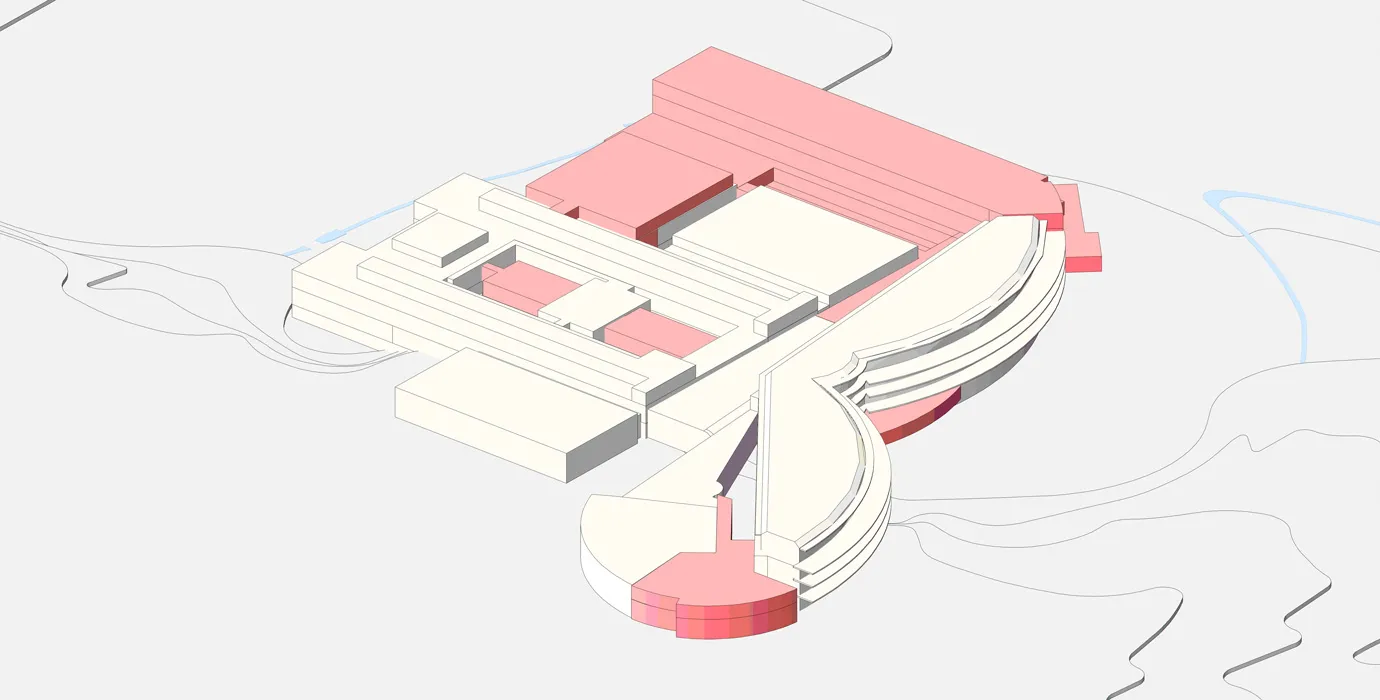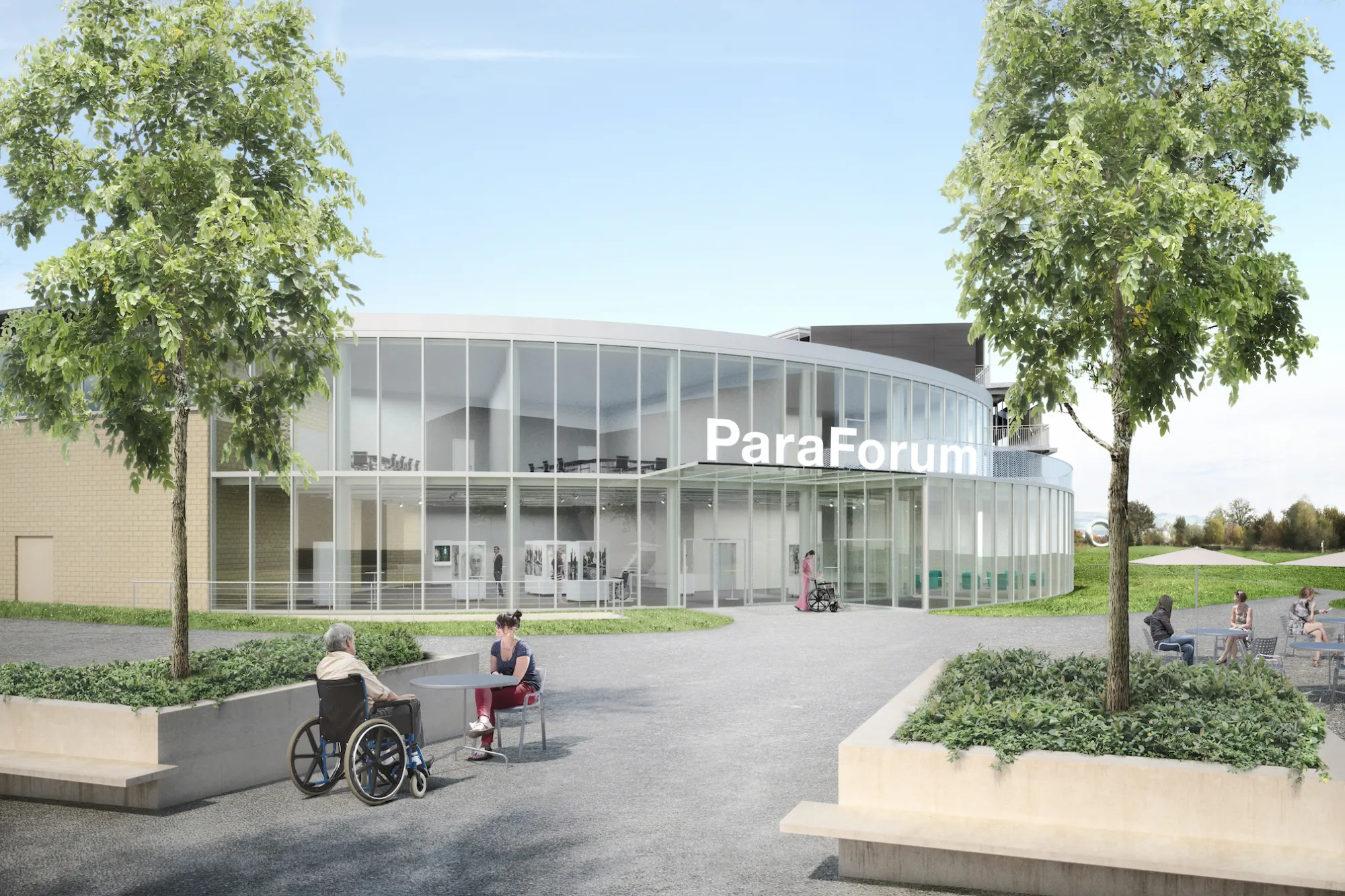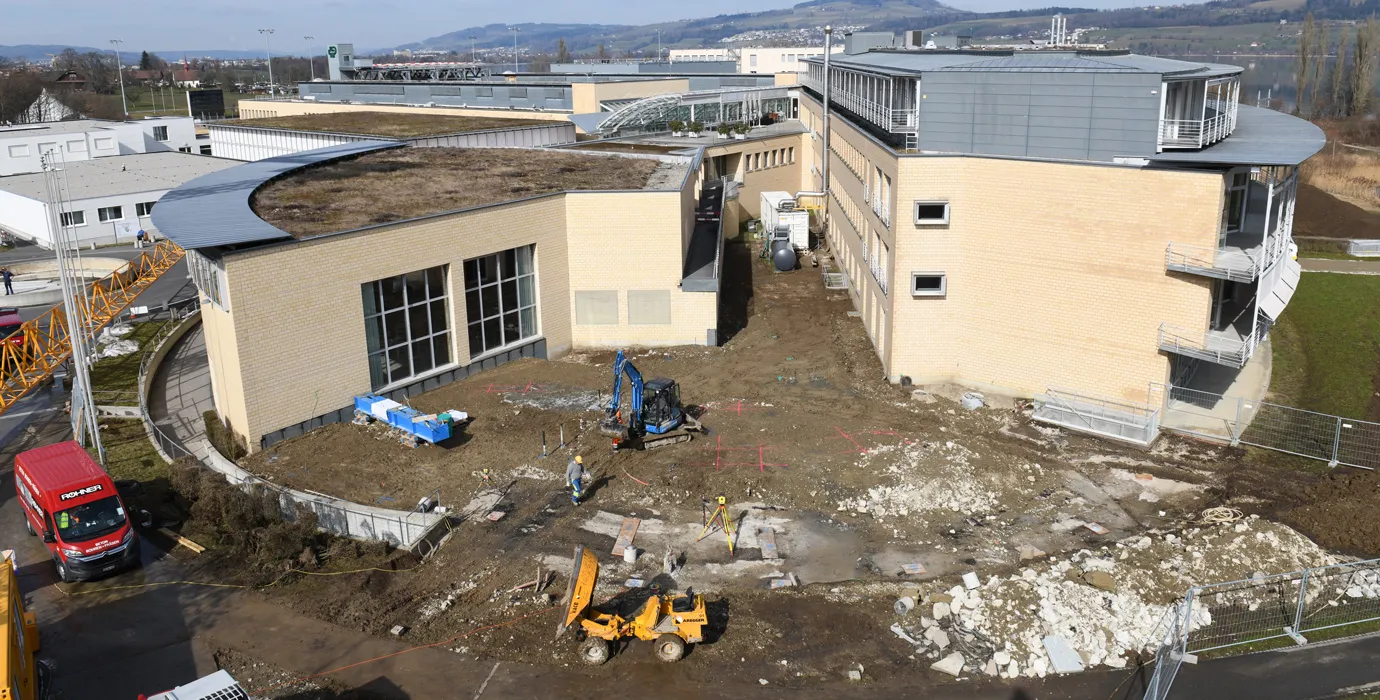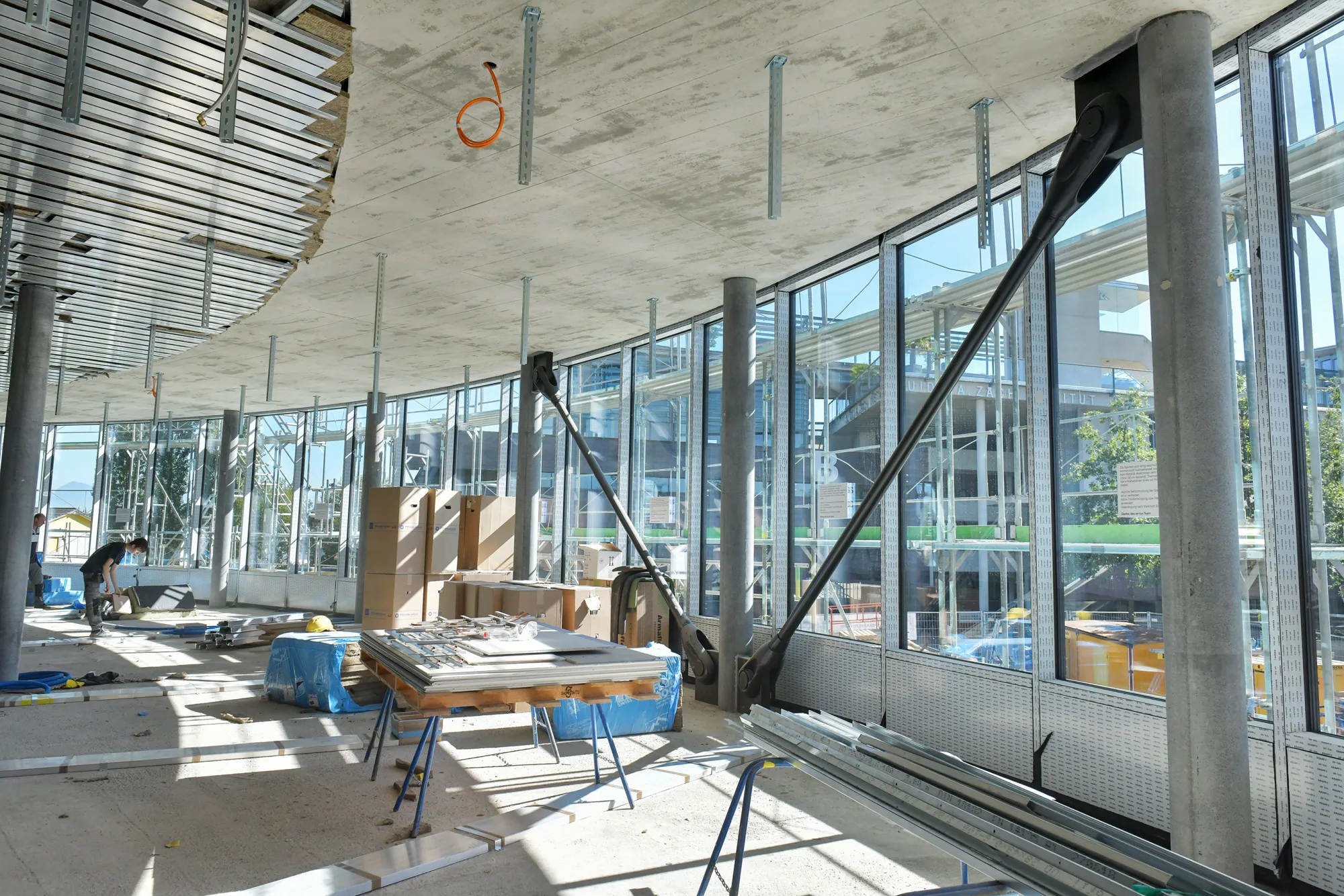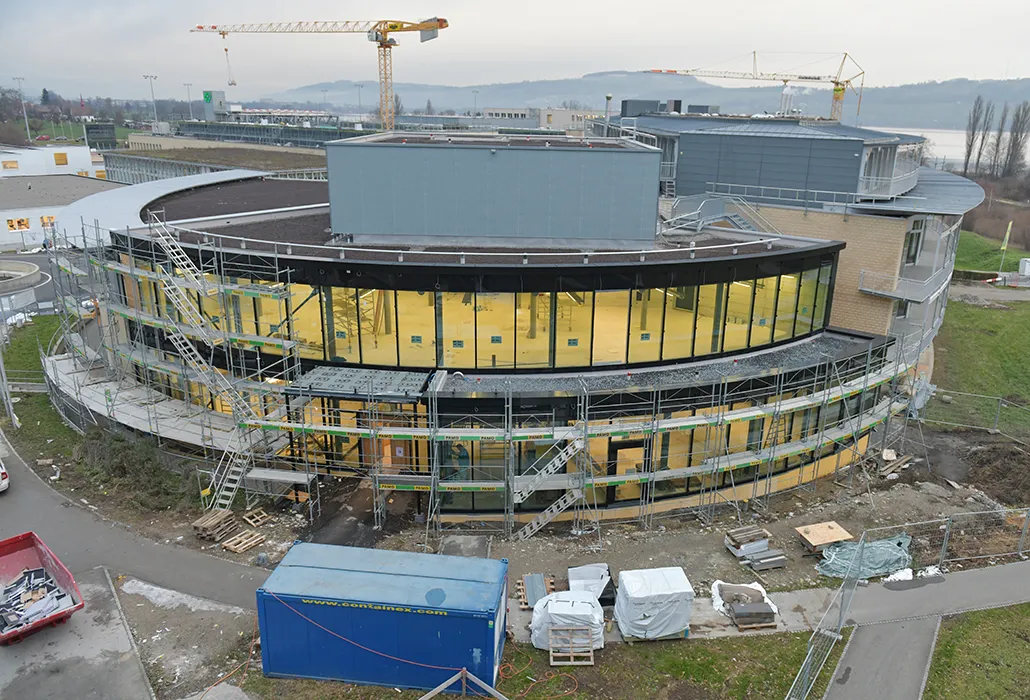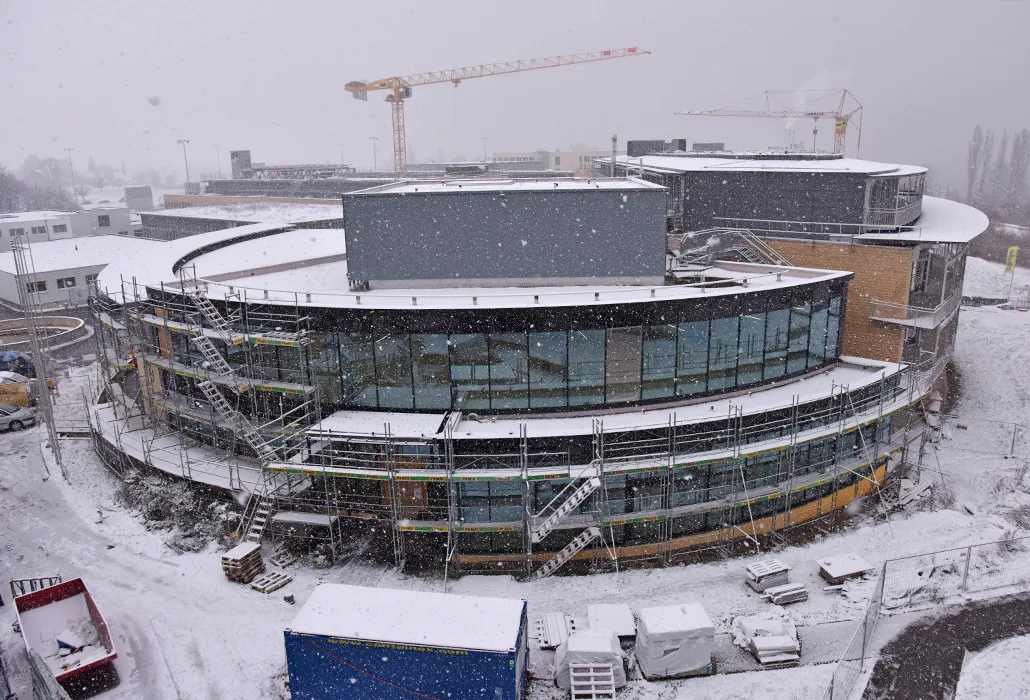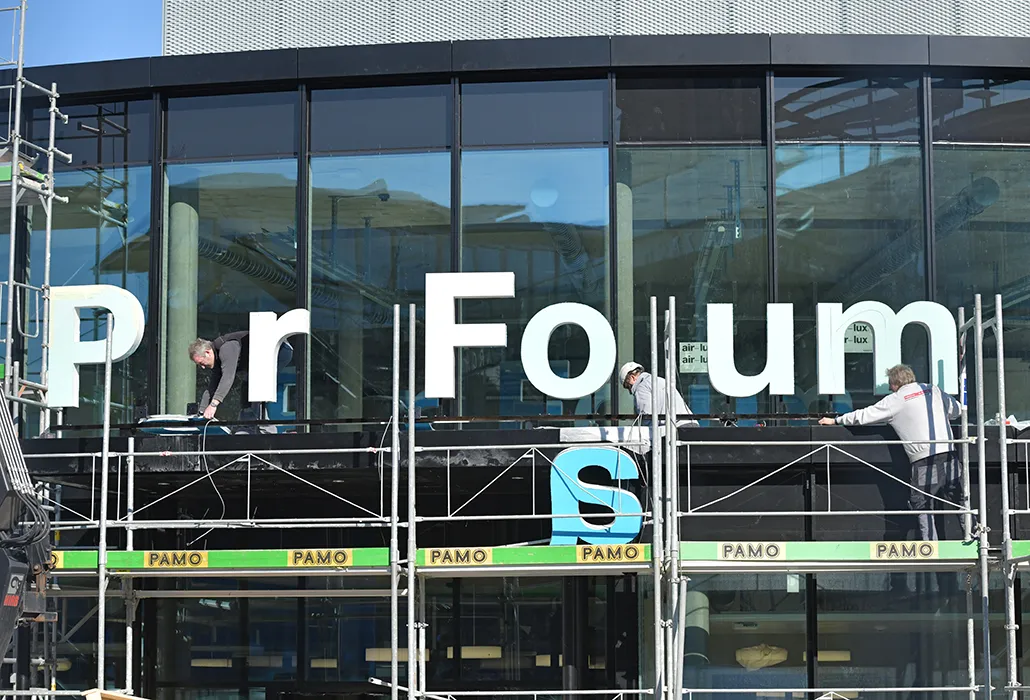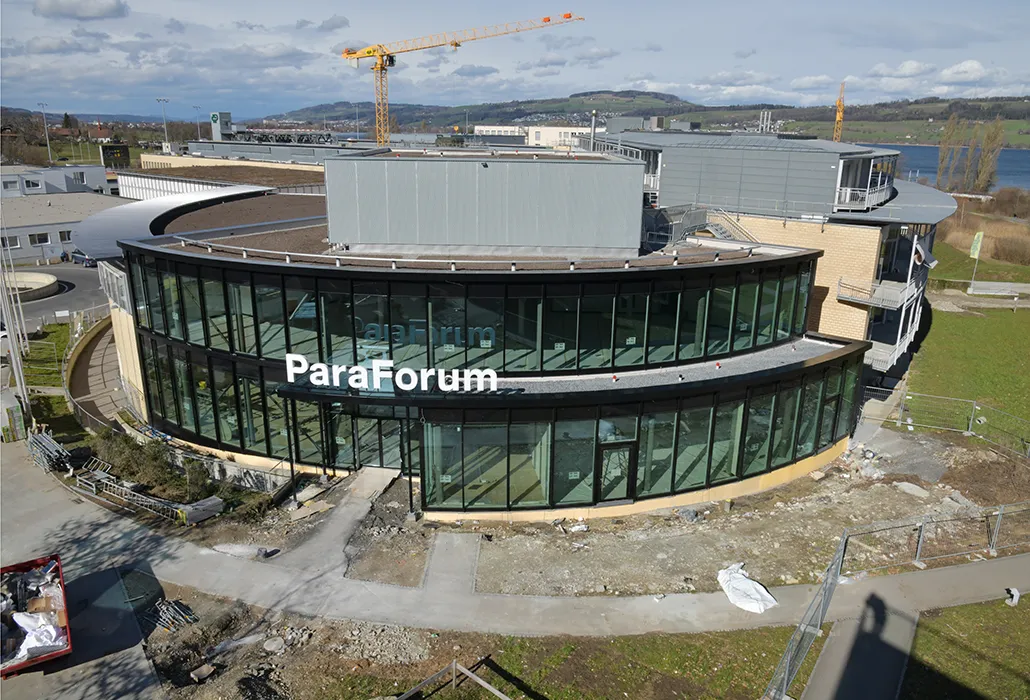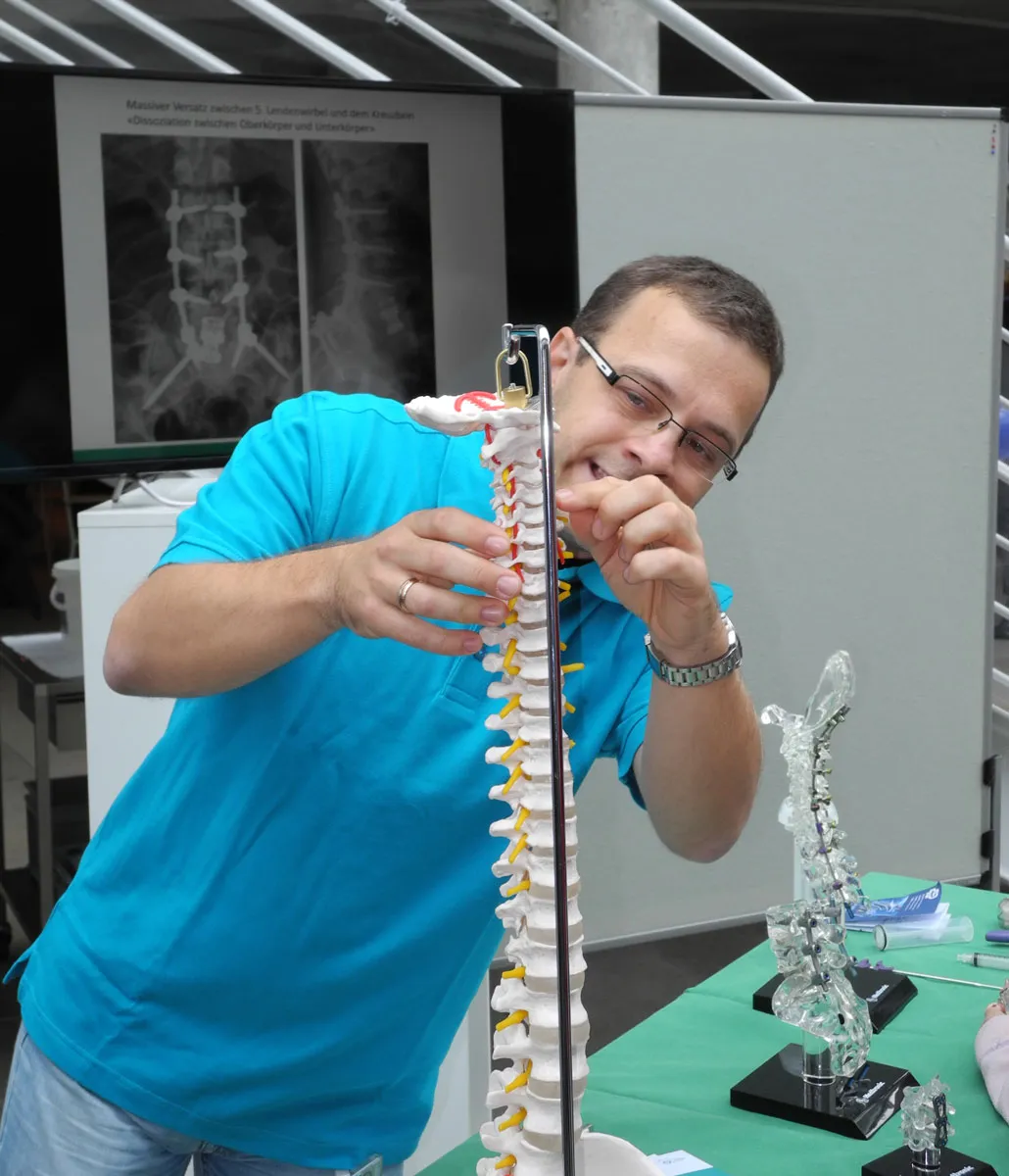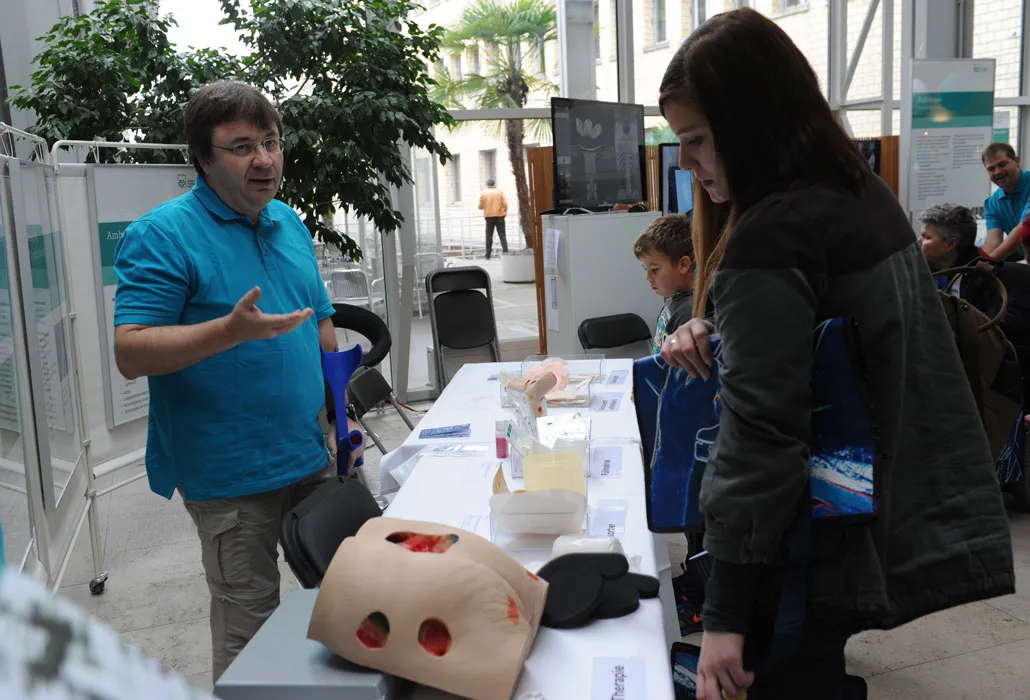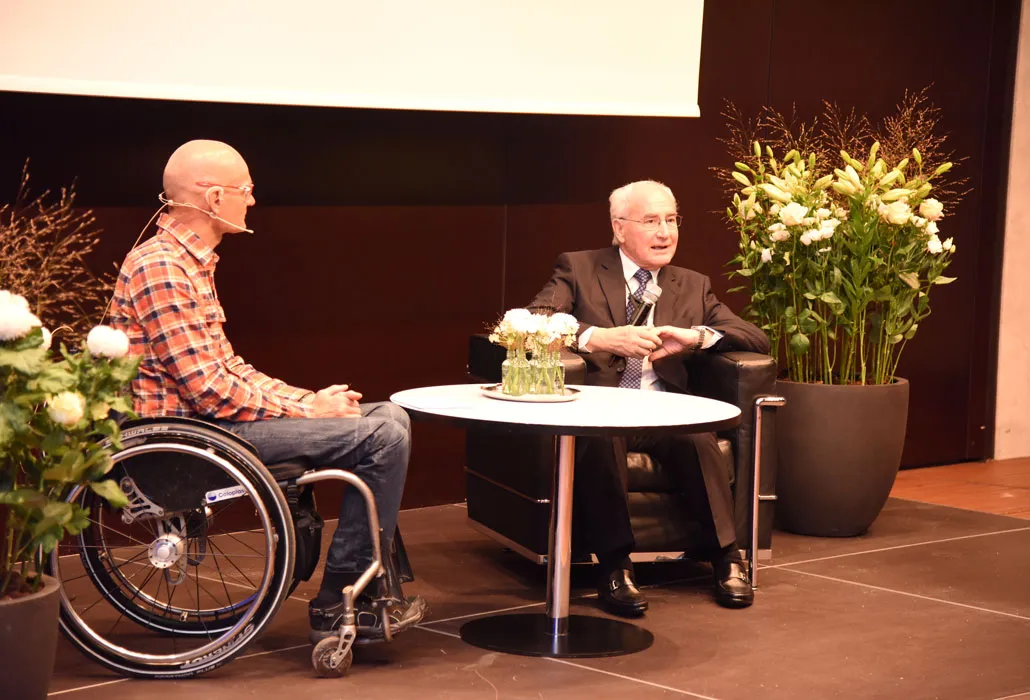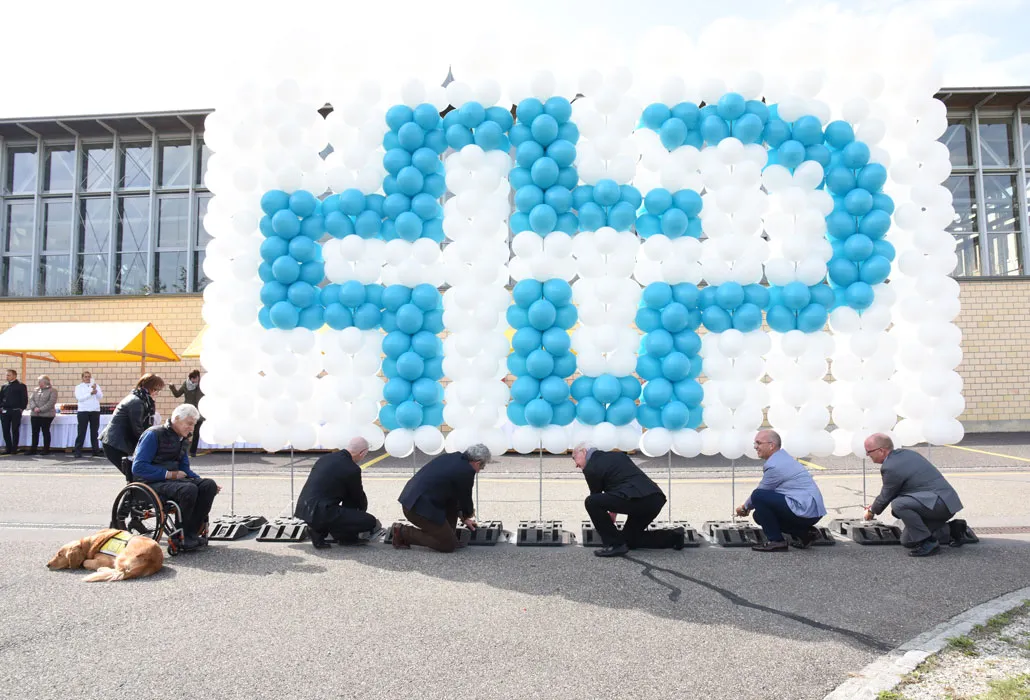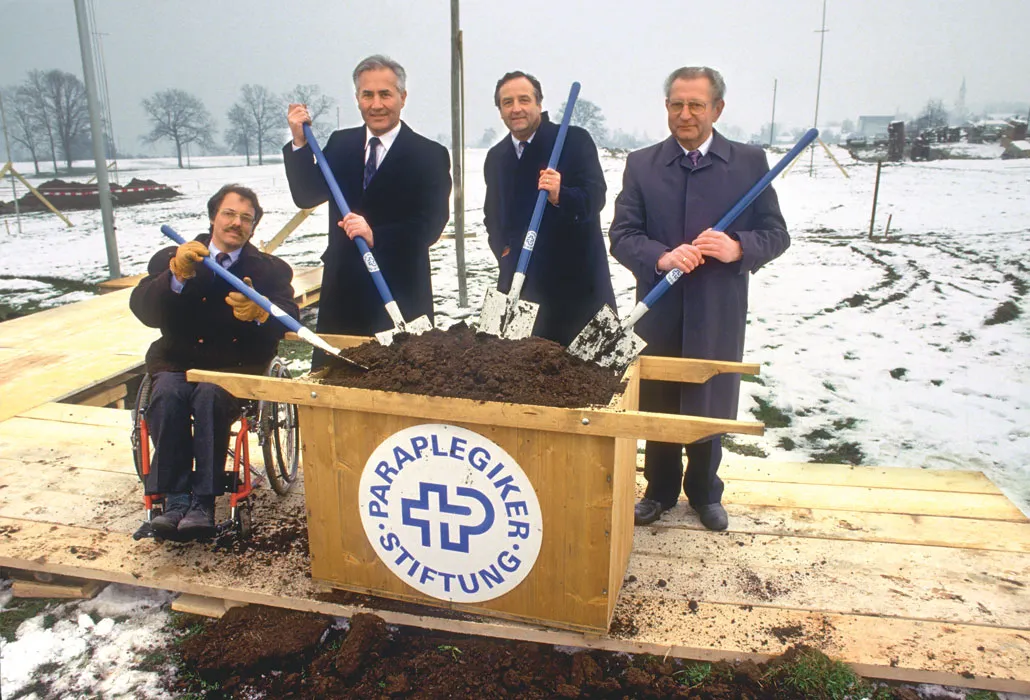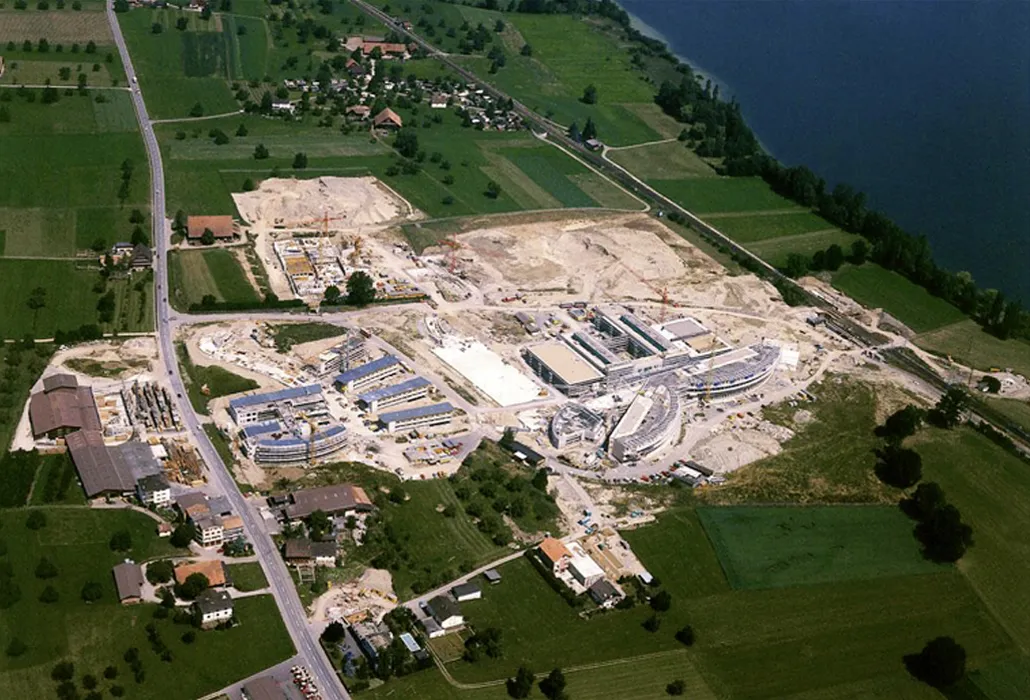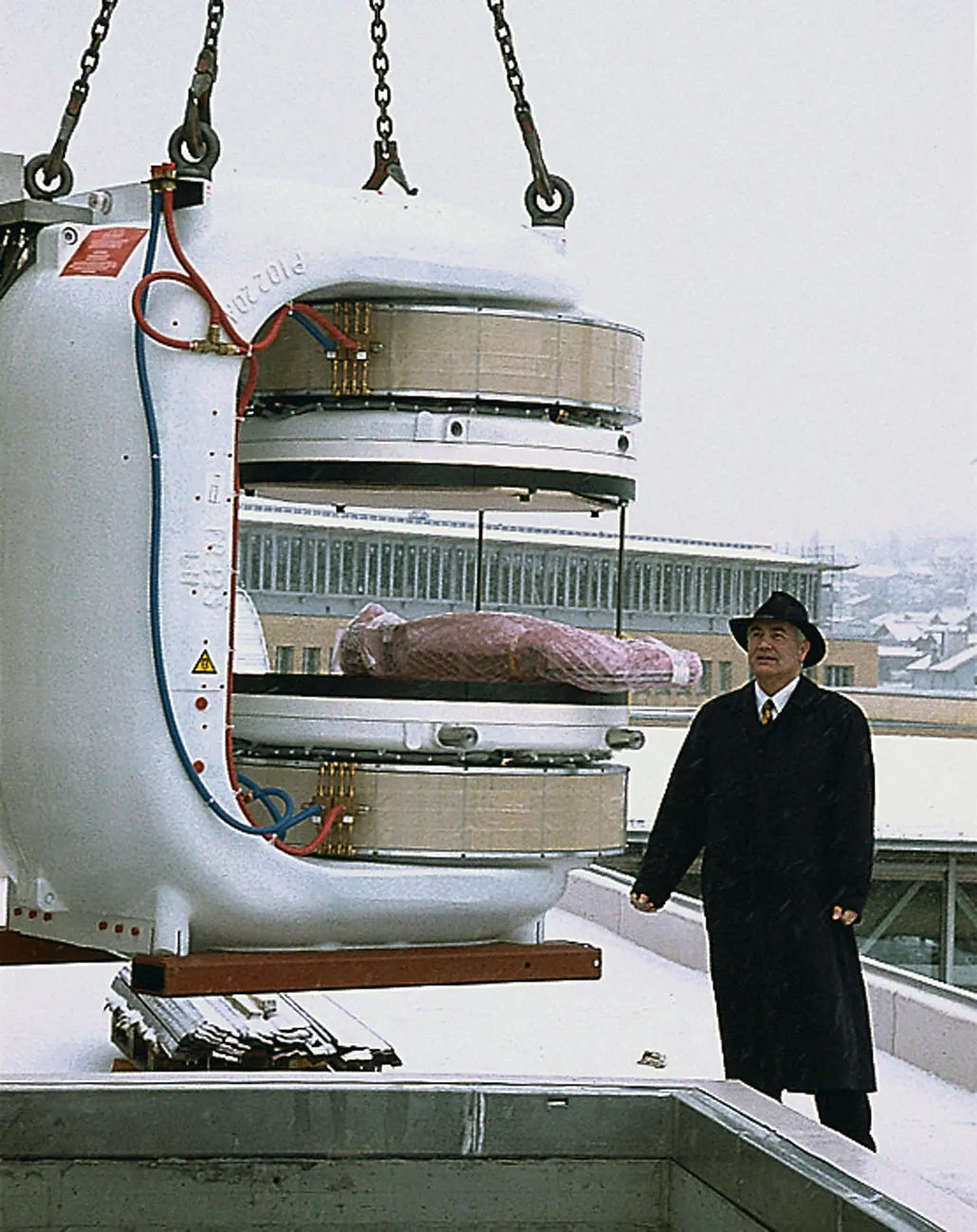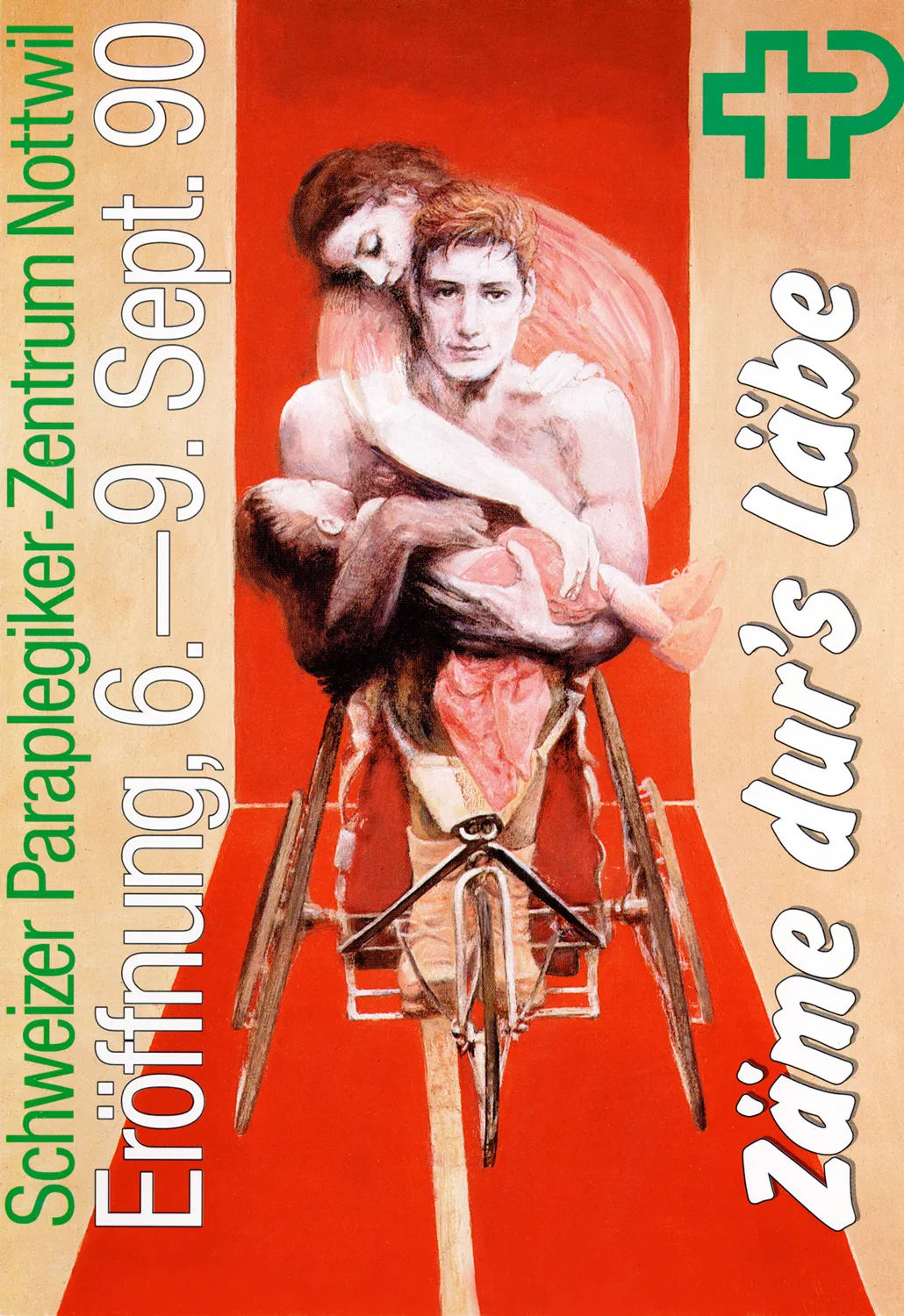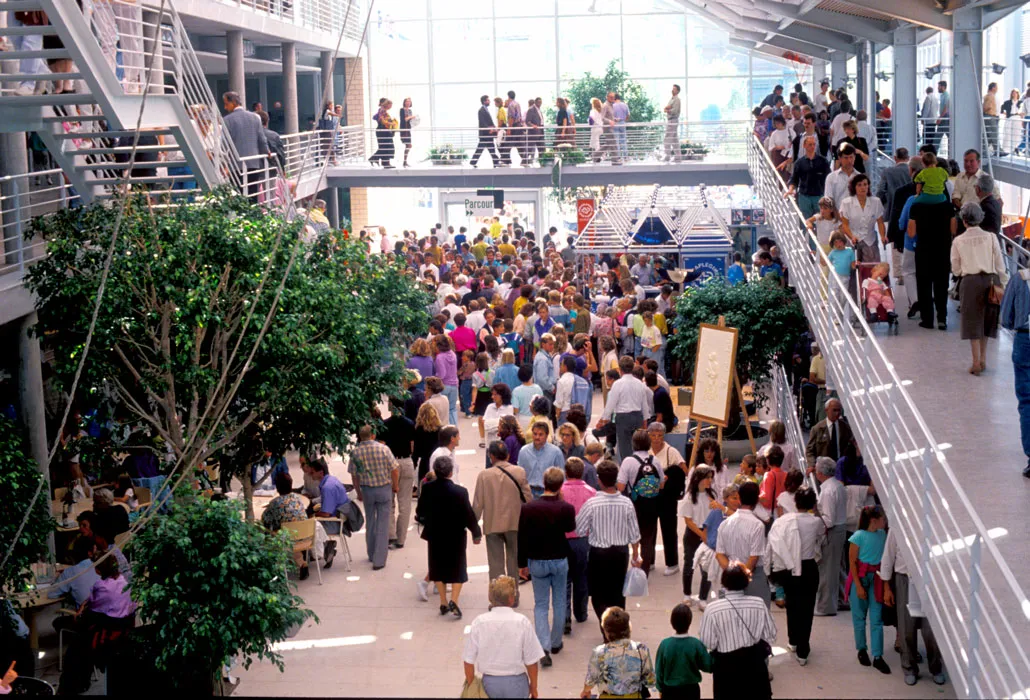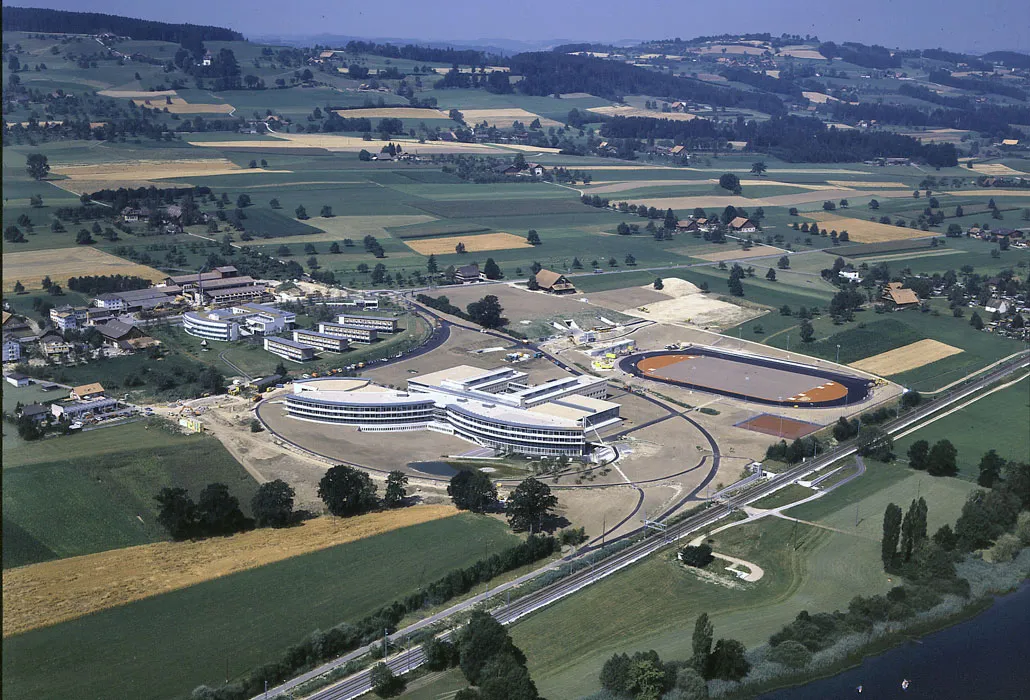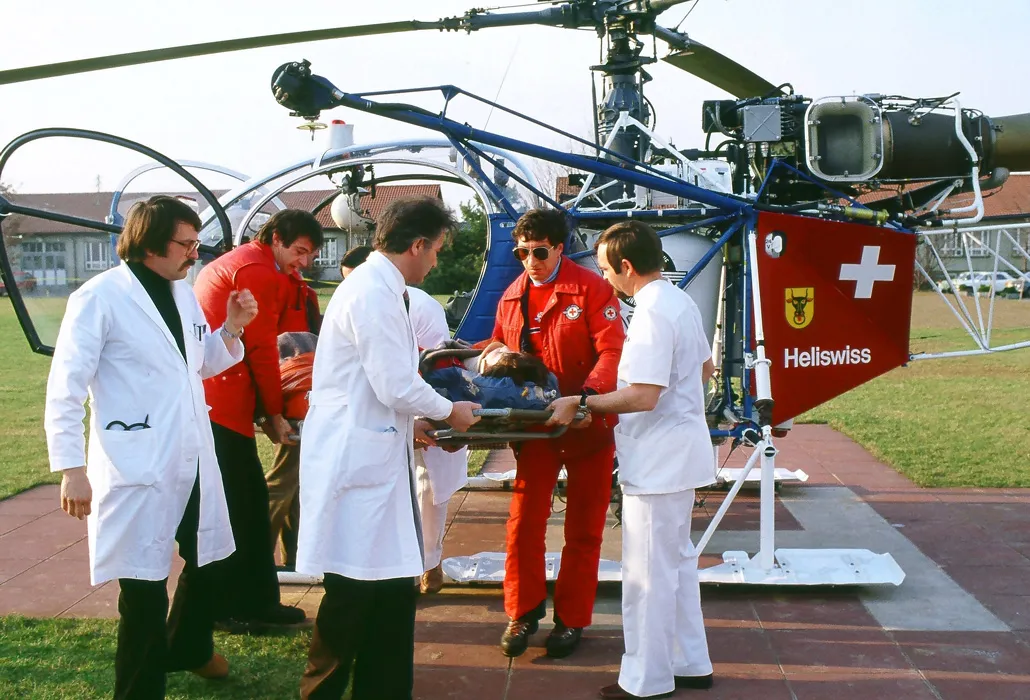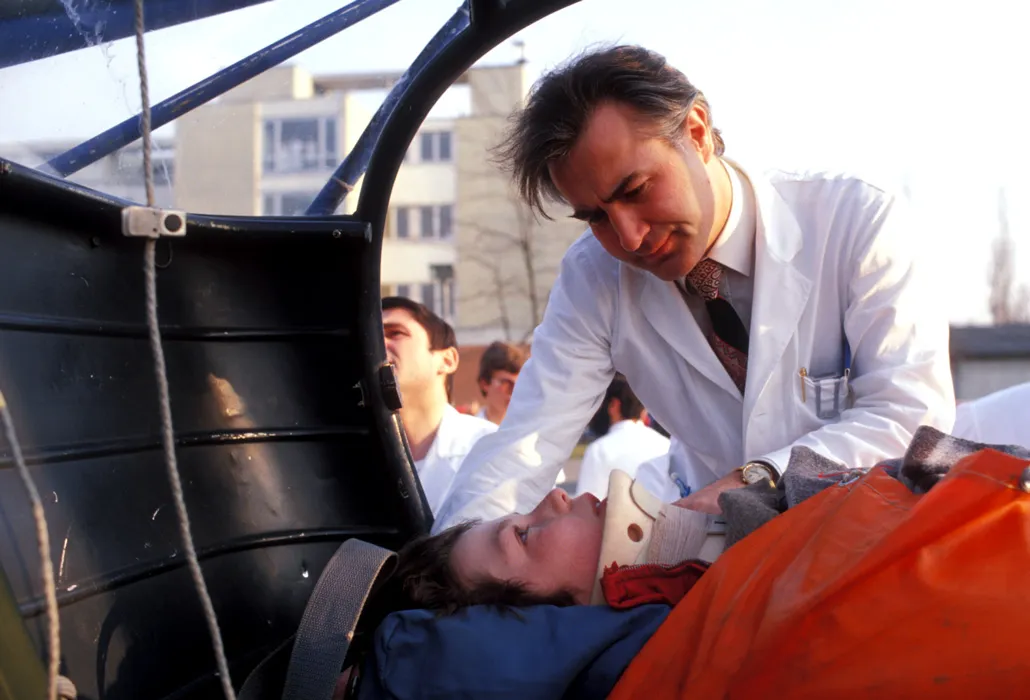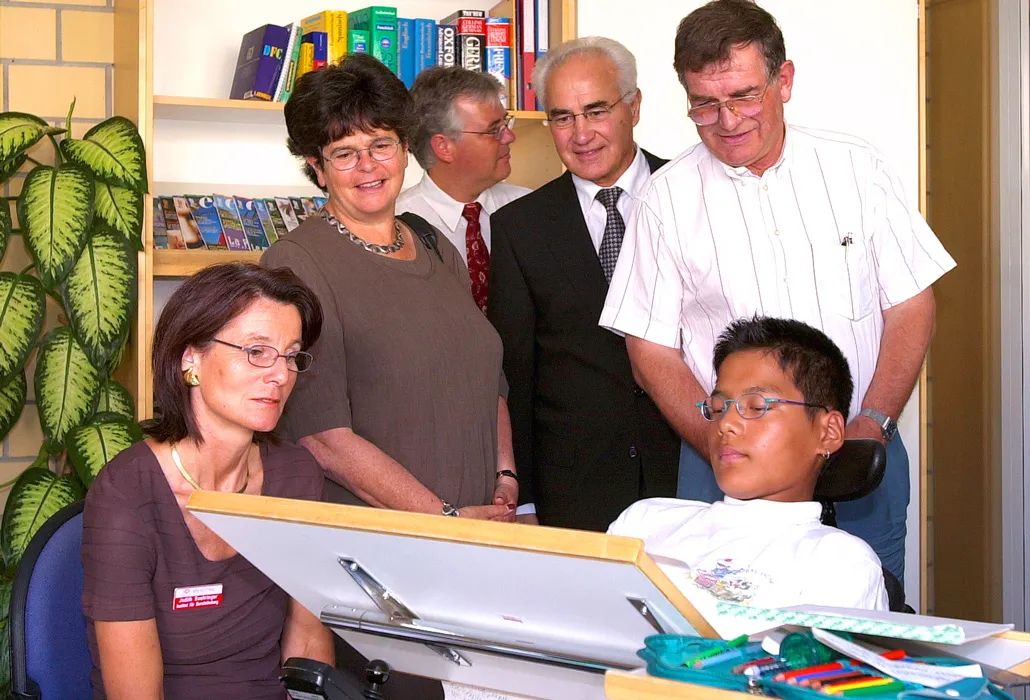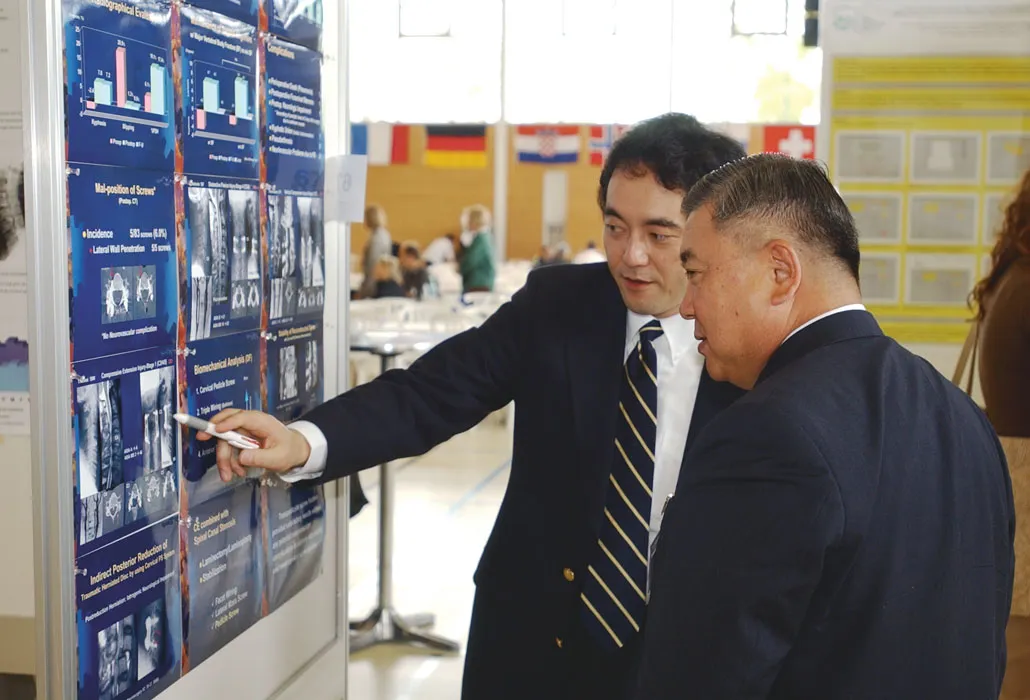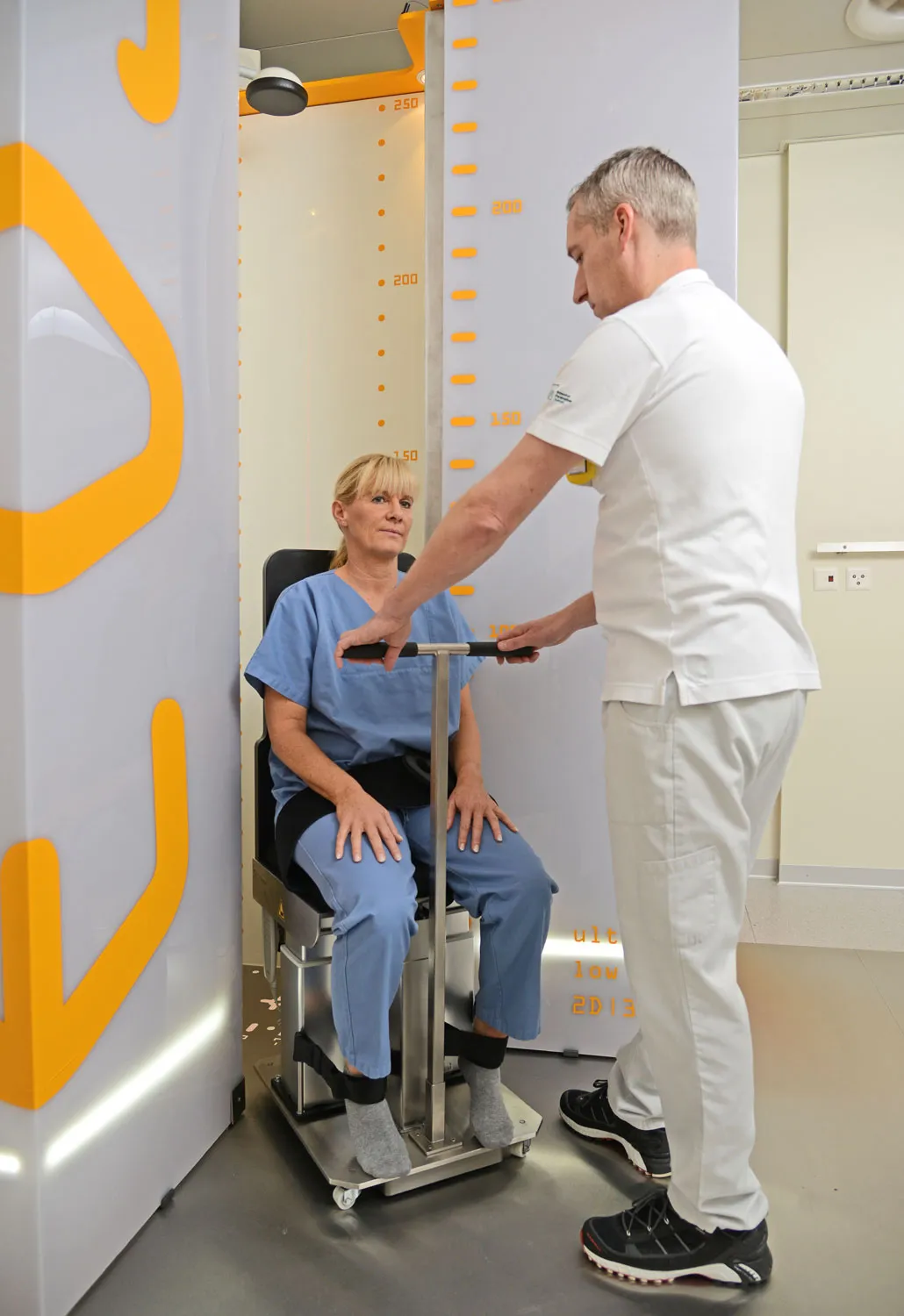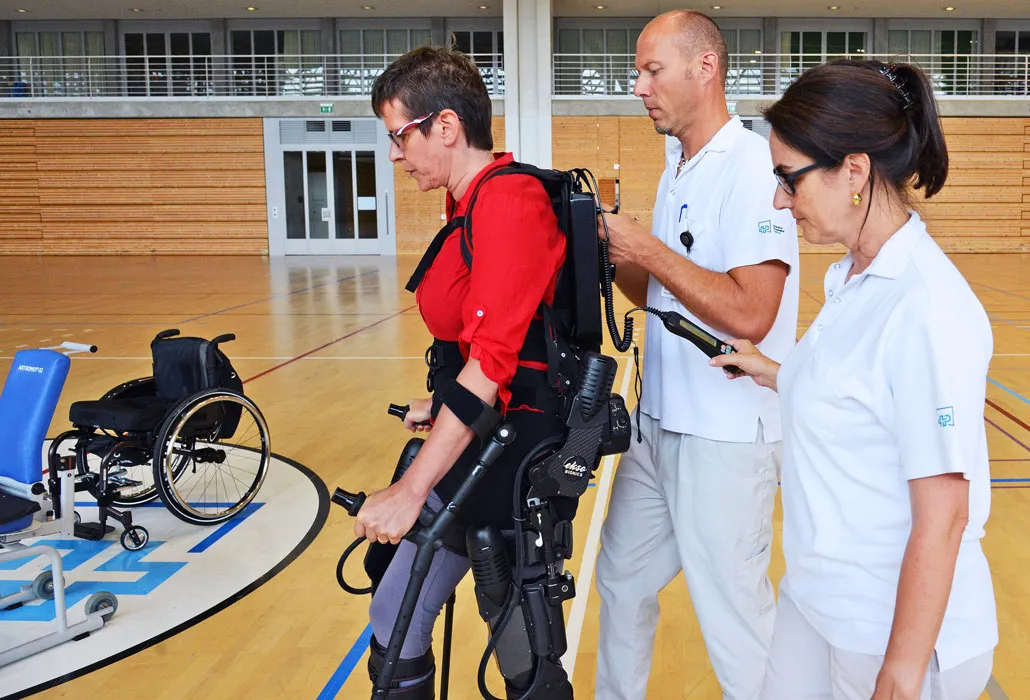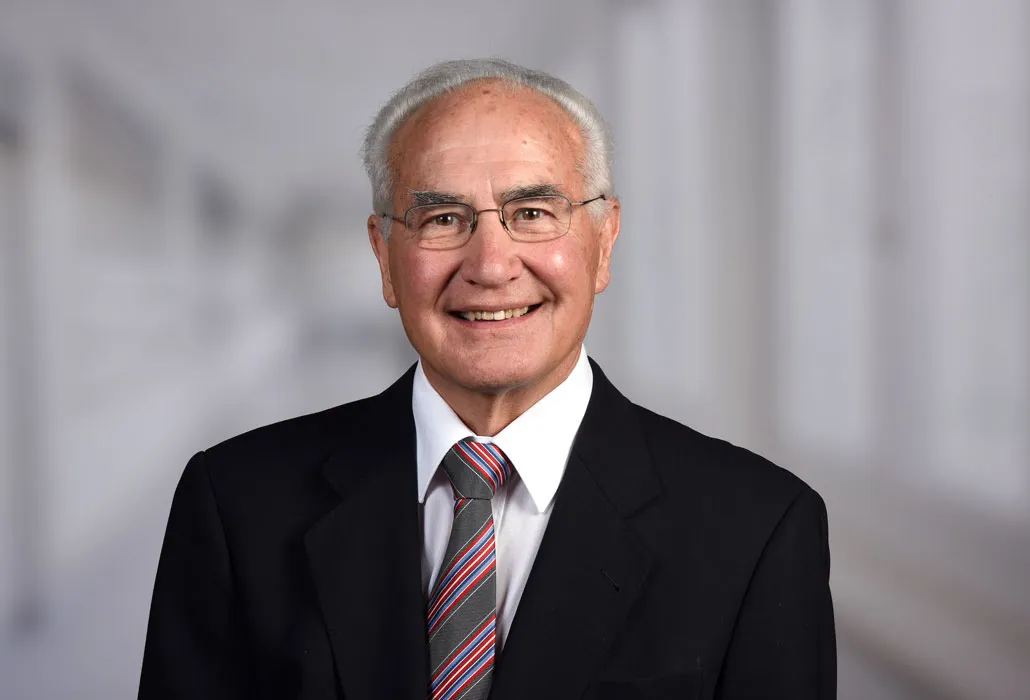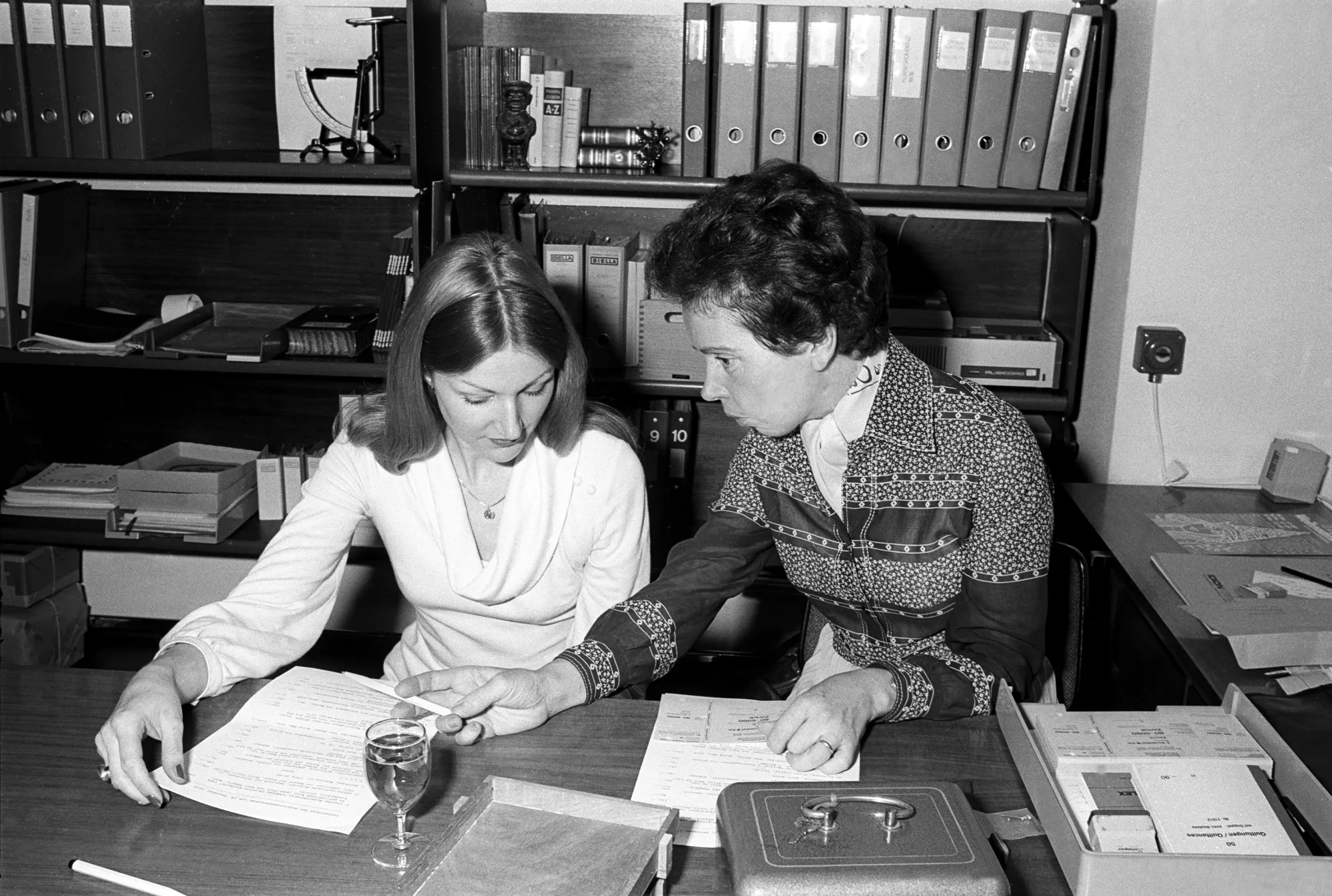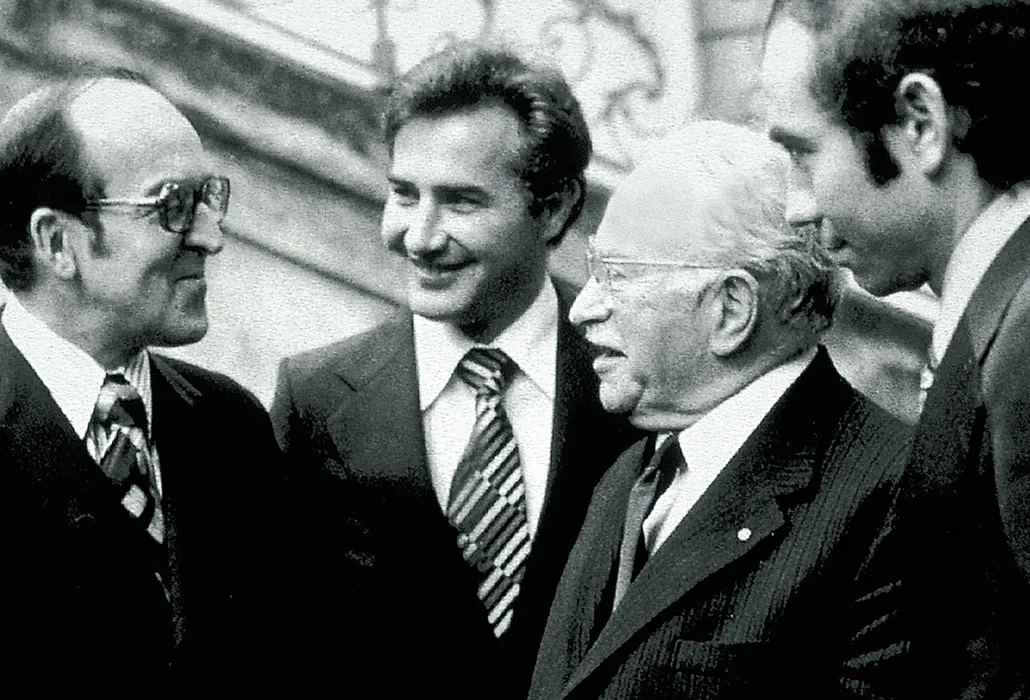
Geschichte
2023
New day nursery «Paradiesli»: a customised children's paradise
The time finally came on 12 June 2023: the newly built day nursery «Paradiesli» was opened for our employees’ children on Nottwil Campus. The demand for flexible crèche places was now so great that the existing premises of the in-house crèche were no longer sufficient. In some cases, it was even necessary to move into temporary premises. This makeshift solution is now a thing of the past. The oval, curved wooden building on Nottwil Campus was planned and designed by the architect and former patient, Ursula Schwaller.
In the new day nursery, everything is tailored to the needs of the approximately 80 children. The kitchens are designed in such a way that the young children can actively lend a hand. The toilets were designed in a child-friendly size. Even the sinks are at a height which also enables the smallest ones to wash their hands on their own. Outside there is an impressive vehicle fleet, a slide and swings. Inside there are hammocks, gym mattresses and a creative room. The name of the day nursery, which opened in June 2023, says it all: it is a small children’s paradise. It also helped that the children followed and supported the construction of the new day nursery from the ground-breaking ceremony onwards.
2021
Perspective films
The Swiss Paraplegic Foundation has made four new short films. They take a closer look at the life of wheelchair users from various perspectives.
With the new perspective films, the Swiss Paraplegic Foundation would like to touch numerous people, while raising awareness of the topic of spinal cord injuries. In addition to a documentary about Guido A. Zäch, the founder of the Swiss Paraplegic Foundation, there are three other artistic films.
All the films were presented at the Zurich Film Festival in September 2021.
Information about the perspective films
2020
ParaWG
The ParaWG shared apartment is a joint project of the ParaWork department for occupational reintegration and the SPF group company ParaHelp. It is also noteworthy that the federal disability insurance is involved. In addition, various companies and foundations have played a part in the project: IKEA Rothenburg furnished the apartment, Trisa AG and Brack.ch donated electronic devices, and the Swiss Stiftung Folsäure foundation contributed financially. Over the 2020/2021 new year period, Swiss television will report from the shared apartment in a four-part series as part of the Schweiz aktuell news programme.
First digital annual report
The Swiss Paraplegic Group is to publish its annual report in digital form for the first time. It contains statements from the President of the Board of Trustees, Executive Directors and Managing Directors, a status report, insights into the highlights of 2019, and many other interesting stories relating to the Swiss Paraplegic Group.
Heidi Hanselmann is the new President of the Board of Trustees of the SPF
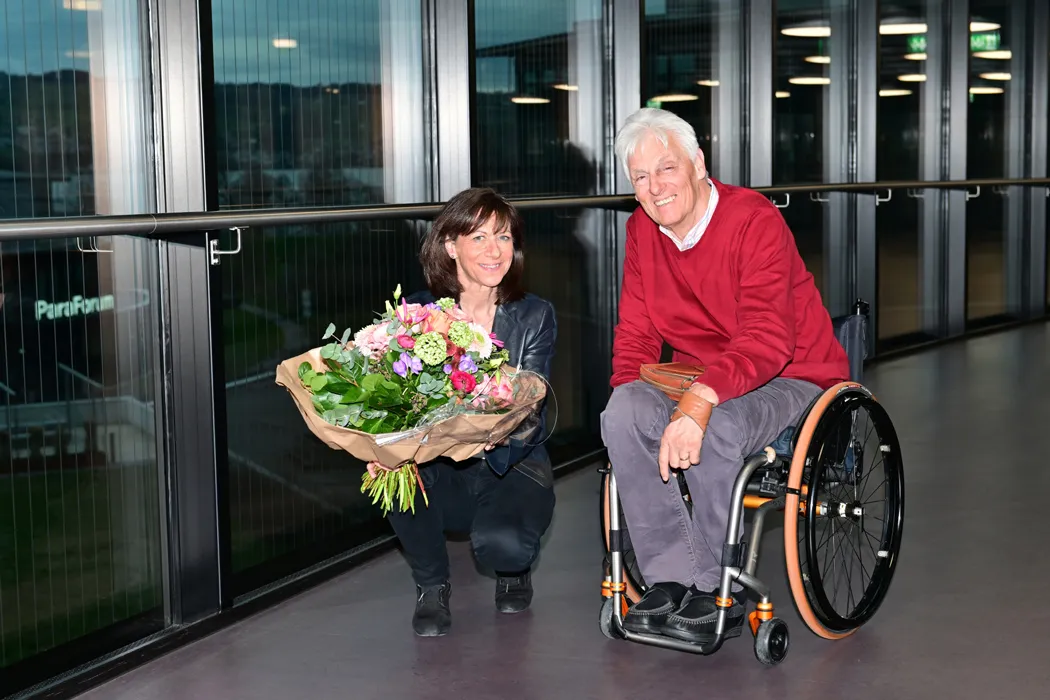
Heidi Hanselmann (left) with Daniel Joggi.
Heidi Hanselmann will take over as President of the Swiss Paraplegic Foundation (SPF) on 1 June 2020. Daniel Joggi, who is standing down because of his age, worked for the Swiss Paraplegic Group (SPG) for more than thirty years, including ten years as the President of the Board of Trustees. Numerous innovations were implemented during his presidency that have prepared the SPG’s network of services to cope with future requirements. At the end of April, the 70-year-old from French-speaking Switzerland will be stepping down along with Vice-President Luca Stäger and Christian Betl.
Cantonal medical centre at the SPC
On behalf of Canton Lucerne, the Swiss Paraplegic Centre (SPC) is to set up a medical centre for corona patients on its premises. In a first stage, 200 beds will be made available in the sports hall. SPC sees this as an important sign of solidarity in the current situation.
Medical centre to be run by army and civil defence teams
In a first stage, around 200 beds will be made available within two weeks. The final capacity when it is fully operational could be increased if required. The medical centre will be set up in the sports hall, the hall and, if required, other rooms of the SPC. It will be run by army and civil defence teams separately from the day-to-day operations of the SPC. The SPC will also make its new acute medicine unit in the north wing with up to 100 beds, including the intensive care unit, and about 30 beds for artificial ventilation fully available for the treatment of COVID-19 patients. Treatment of patients with a spinal cord injury will be guaranteed without restrictions in other parts of the building.
2019
SPF launches a new “I’m sitting innocently” advertising campaign

Subjects of the new SPF advertising campaign.
In May, the SPF will launch its new advertising campaign for members with the slogan: “I’m sitting innocently”. It makes it clear that a spinal cord injury can affect anyone - irrespective of time, place, and age. For the first time, the SPF is running a crossmedia campaign with TV commercials, advertising posters, printed and on-line advertisements. The wheelchair-bound protagonists are people living with a spinal cord injury who face life with self-confidence and on four wheels.
Have a look at the “making of”.
Memorial wall for people making donations by legacy
Since 1990, about 3500 people have left a donation by legacy to the Swiss Paraplegic Foundation. To thank these donors appropriately, a memorial wall has been created on the façade of the garage opposite the new Visitor Centre. A total of 6669 small mirrored metal plaques have been hung from the metal construction, with 2667 of them bearing the names of donors. The idea and design of the memorial wall came from the tät-tat agency of Eastern Switzerland, which enlisted long-term unemployed individuals to create the tiles.
Mona mittendrin in the SPC
The SPC is once again the location for a TV production. In the Mona mittendrin series, presenter Mona Vetsch is thrown in at the deep end and finds herself somewhere she has not prepared herself for, for example in an army boot camp, in a soup kitchen, or in the Swiss Paraplegic Centre. For three days, Mona immerses herself into the life of people with paraplegia and tetraplegia on Ward H.
Cooperation between SIRMED and Rega

Outside view of SIRMED training building with Rega helicopter.
Their cooperation allows both companies to utilise synergies in the field of training and continuing education in emergency and rescue medicine, and to develop new offers. The SIRMED headquarters will remain in Nottwil.

“A successful rescue requires efficient cooperation along the whole rescue chain. Our commitment promotes training and development at all levels of rescue medicine, which improves the quality of cooperation at the scene of an accident, which in turn benefits our patients.”
Ernst Kohler , CEO-Rega
Today, SIRMED is one of the market leaders in training in the field of emergency and rescue medicine. SIRMED now has 23 full-time employees and about 230 workers paid on an hourly basis.
2018
“A little is never enough.
For us, it’s all or nothing.”Guido A. Zäch
SPC moves into state-of-the-art operating theatres and new Intensive Care Unit
The extension work in the Swiss Paraplegic Centre achieved two important milestones in November 2018: two of the three new operating theatres and the new Intensive Care Unit are now operational.
With the O-arm and S8 navigation system, the operating area contains state-of-the-art technology. The X-ray machine provides continuous 3D images when required. The navigation system facilitates orientation for surgeons and enhances their precision. Screws can be inserted to the specified millimetre.

“Thanks to generous donors, we were able to invest in state-of-the-art technology, which provides patients with the best possible care.”
Daylight instead of neon tubes
To provide people with a spinal cord injury with as much privacy as possible during their stay, the new Intensive Care Unit only has single rooms. There is also an observation bay for every two rooms. Thanks to this additional room with a view into patient rooms, nursing staff can maintain an overview and remain close to the patients without constantly causing disruption by entering the room.
SPC as a location for an SRF feature film
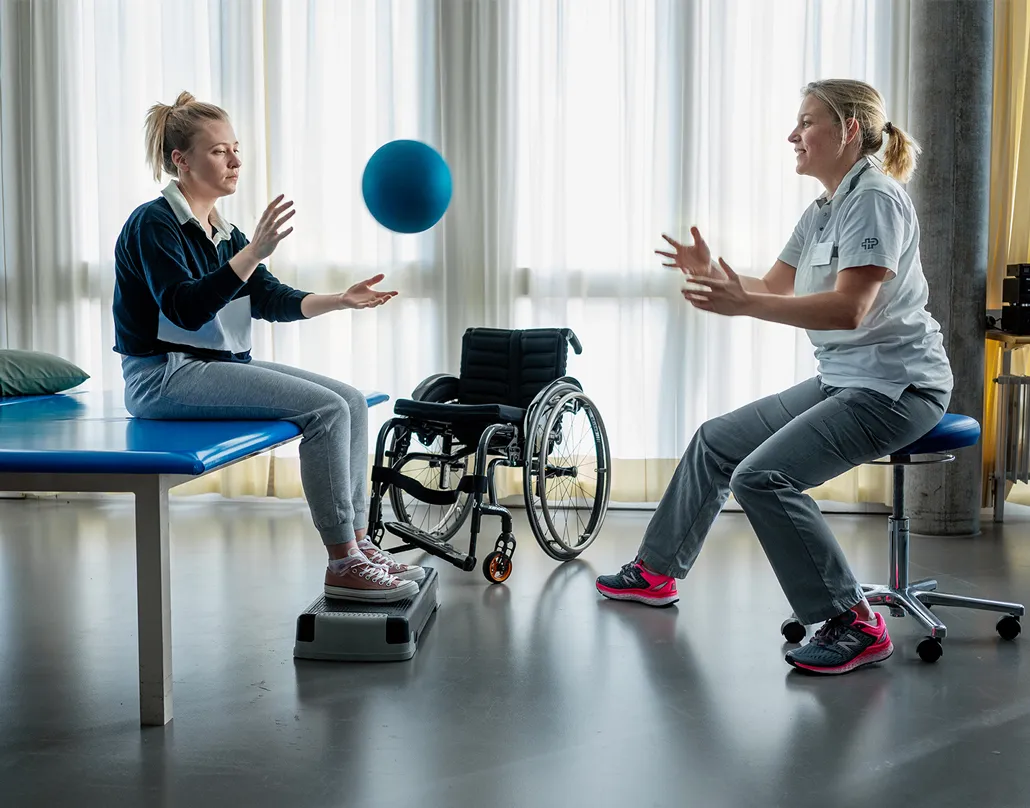
Elodie having physiotherapy in the SPC. Image: SRF
In April 2018, in cooperation with the company C-Films, the SRF television channel used the SPC to film the hospital and rehabilitation scenes for the new Swiss feature film Weglaufen geht nicht. The film will be shown in a primetime slot on SRF on 11 November.
Cheerful 21-year-old Elodie has just completed her qualification in child education and wants to go travelling before life starts to get serious. However, on her way to the airport she is hit by a car. In hospital she finds out that she is paralysed from the fifth lumbar vertebra down. With her goals and dreams ripped away from her, she doesn't know how to deal with this devastating blow
Modern simulation rooms for SIRMED
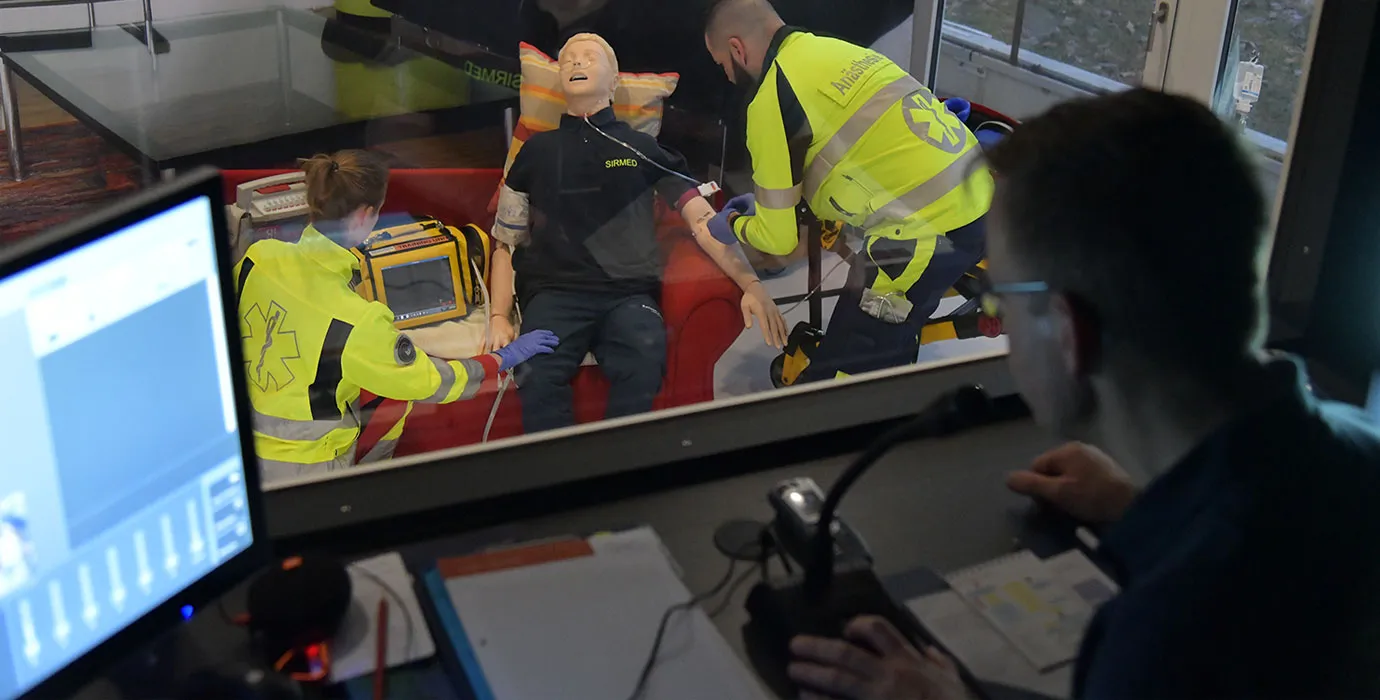
The new SIRMED simulation rooms.
At the Swiss Institute of Emergency Medicine SIRMED, professionals from all over Switzerland now have the opportunity to run through emergencies in an extremely realistic manner. Hospitals across Switzerland can hire out this infrastructure to carry out simulation training themselves for their staff or to book the appropriate courses with SIRMED. The simulation rooms are the most modern of their kind in Switzerland.
“Thanks to these dummies and the new rooms, we can offer extremely realistic conditions during the simulations.”
Kai Kranz, Divisional Head of CME (Continuous Medical Education) at SIRMED
During the simulation practices, the head of the simulation sits in a side room in the SimCenter in Nottwil, observing the medical professionals through a mirrored screen and controlling the scenarios. The professionals practice with high-tech dummies in the new premises. These dummies can sweat, breathe, bleed, and speak. Their pupils even react to light stimuli. The head of the simulation can also use remote control to trigger, for example, allergic reactions or symptoms of a heart attack in the dummies. In the meantime, the professionals have to find out what is wrong with the patient and act accordingly.
The practice sessions in the simulation rooms and in the outdoor area of the SIRMED premises in Nottwil are recorded with fixed video cameras and then analysed with all participants. This is because, in crisis situations, errors are often caused by a lack of coordination, cooperation, and communication.
A brand new look
The newly designed Swiss Paraplegic Group website paraplegia.ch went online in April 2018. Its contents have been rearranged for a better layout and an improved reading experience. Thanks to its easy-to-use navigation, visitors can quickly access the information they need. Its “responsive design”, which adapts the content to fit a variety of different devices, is both state-of-the-art and extremely user-friendly. What’s more, the new website is also accessible to those with disabilities.
Beginning of construction on the visitor centre
The ground-breaking ceremony for the new visitor centre took place at the beginning of March 2018.
Active Communication becomes a new subsidiary of the SPF
Active Communication AG became a subsidiary of the Swiss Paraplegic Foundation (SPF) on 1 January 2018. Since 1999, the SPF has been providing people who suffer from disabilities and/or neurological disorders with electronic and teaching aids to allow them to develop their autonomy and participate more fully in their everyday lives. The company is based in Steinhausen in the Canton of Zug.
The SPF builds the Innovation Centre for Assistive Technology
Along with its new subsidiary, the SPF has created the Innovation Centre for Assistive Technology to ensure patients continue to enjoy access to all the latest resources in the future. As a centre of expertise and knowledge factory, this centre is a point of contact for the development and enhancement of resources for people with spinal cord injuries. The IAT is based in Nottwil (Canton of Lucerne) and Sierre (Canton of Valais).
2015
SPG anniversaries: “Making dreams a reality: yesterday – today – tomorrow”
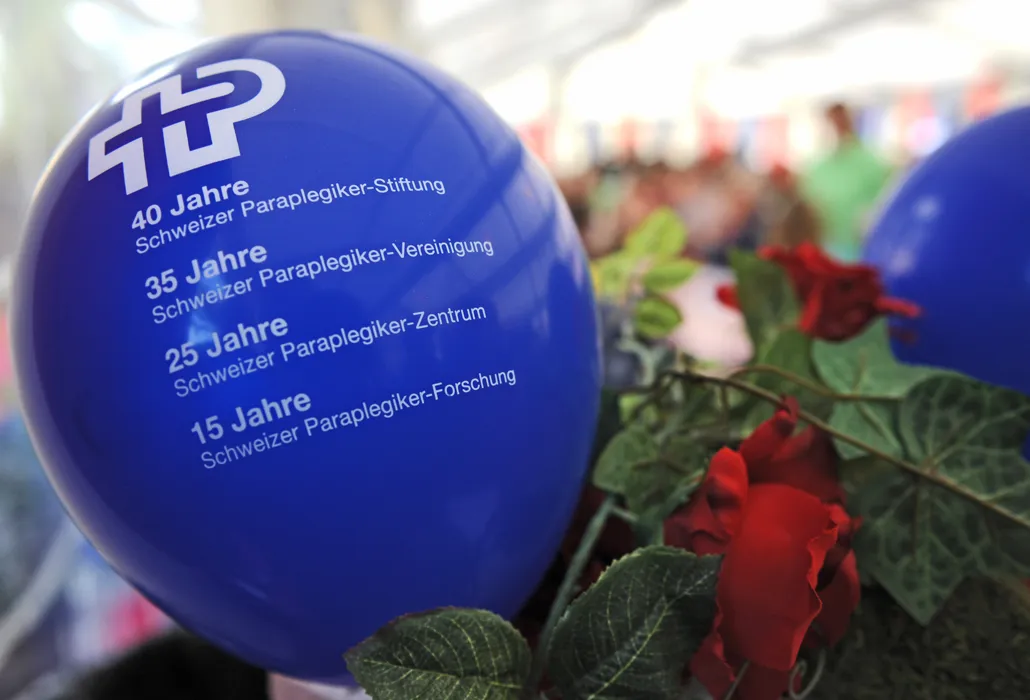
On 24 and 25 October 2015, over 9,000 visitors took part in the Swiss Paraplegic Group’s anniversary celebration. There was, indeed, a lot to commemorate: the Swiss Paraplegic Foundation turned 40, while the Swiss Paraplegics Association, the Swiss Paraplegia Centre and Swiss Paraplegia Research celebrated their 35th, 25th and 15th anniversaries, respectively. What’s more, Guido A. Zäch, Founder and Honorary President of the Foundation, celebrated his 80th birthday.
“We wanted to help people learn to fend for themselves,
without having to rely on handouts.”Guido A. Zäch with Silvia Buscher


An open house that is well worth the visit
For two days, the Nottwil campus invited the public to discover how it “makes dreams a reality: yesterday – today – tomorrow”. The various departments and fields presented their work at stands in the SPF meeting hall and the GZI.
The SPF anniversary film
In celebration of these events, a 12-minute anniversary film was made, which can also be viewed in three separate segments.
Guido A. Zäch becomes an honorary citizen of Nottwil
At the official anniversary celebration, the Nottwil Town Council made founder and pioneer Guido A. Zäch an honorary citizen of the town. Walter Steffen, Nottwil Town Council President, was delighted to present the award “as a token of appreciation for the lifelong work of Guido A. Zäch and an enormous thank you for all the service rendered”.

“Guido A. Zäch gave wheelchair users a voice and an identity. He spread awareness among the public and deepened understanding, including here in Nottwil.”
Walter Steffen, Nottwil Town Council President
Interesting documents
Ground-breaking ceremony for the SPC expansion
The success story continues
On 1 October 2015, the Directors of the Swiss Paraplegic Foundation and Swiss Paraplegic Centre gave the go-ahead for a four-year-long construction project.
The purpose of the construction project is to allow the SPF to meet its growing needs well into the future. The SPF wishes to maintain its pioneering and leading roles in the fields of acute medicine, rehabilitation and lifelong assistance to people with spinal cord injuries for many years to come.
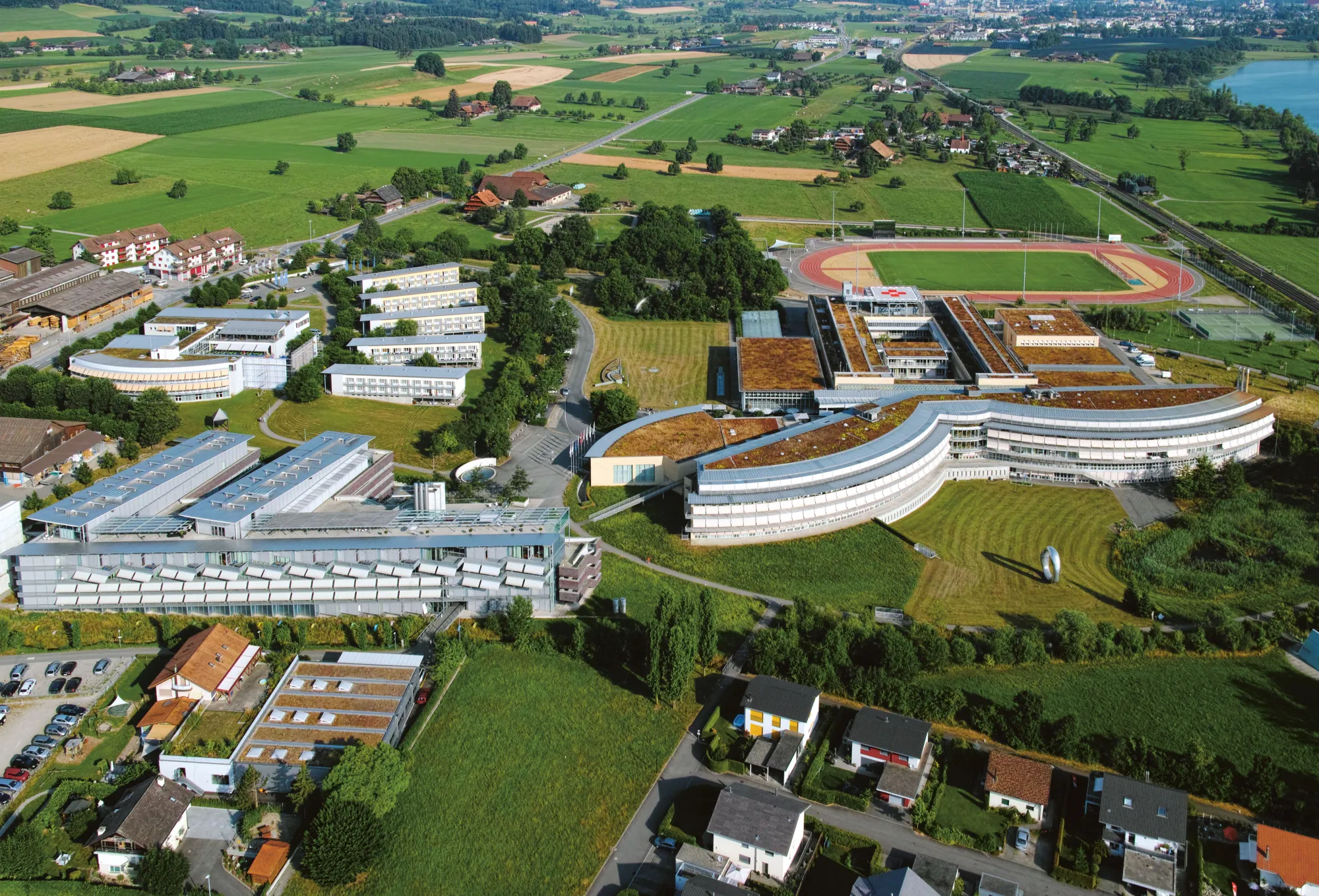
“Patients, as well as the complexity of their injuries and diseases, have changed – new demands are being placed on our staff, processes and infrastructure.”
Hans Peter Gmünder, Director of the SPC
High bed occupancy
The Swiss Paraplegic Centre (SPC) has a bed occupancy rate of around 97%. The clinic has therefore reached the limits of its capacity. We hope to be able to go on meeting the needs of an ever-increasing population whose life expectancy continues to rise, and who consequently suffer more and more spinal cord injuries due to diseases. To do so, we need more room.
Additional information
1990
The Swiss Paraplegic Centre (SPC) expansion
The Swiss Paraplegic Centre (SPC) is being outfitted with a number of unconventional new fixtures, including a fire brigade, gymnasium, sports arena with timing tower, tennis court, indoor swimming pool, farming estate, biotope, public pharmacy, chapel, workshop for vehicle conversions and emergency medical training centre.
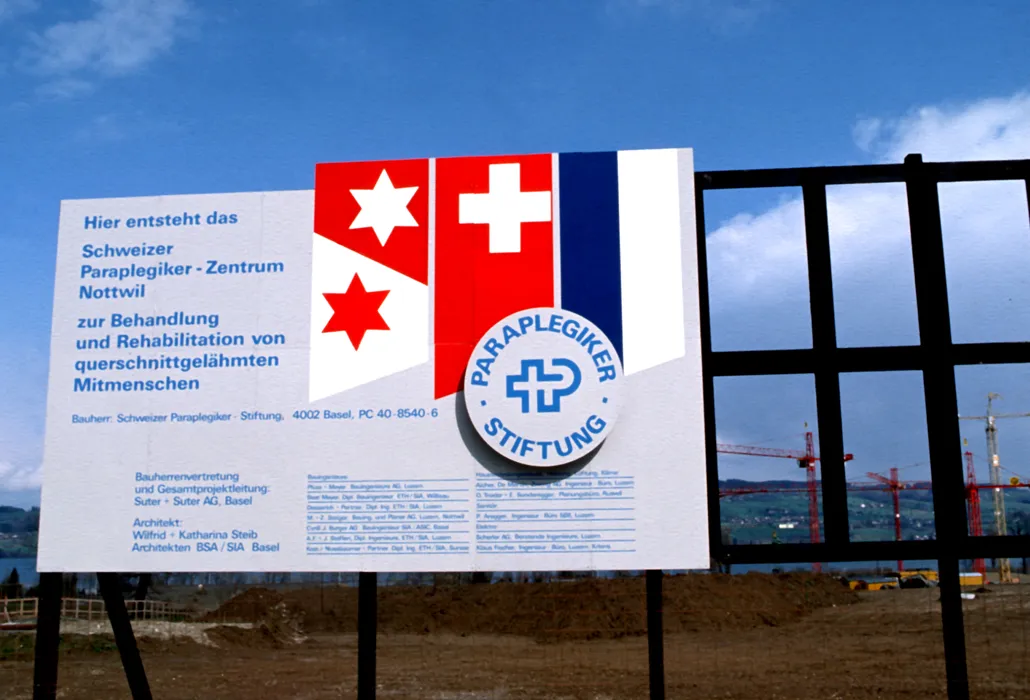
The construction panel announcing the Swiss Paraplegic Centre expansion
The SPC has never been like other clinics. Nor did it want to be, as that would have flown in the face of the centre’s ambition and mission to allow people living with spinal cord injuries to receive comprehensive support and rehabilitation under one roof. Not to mention the goal of offering state-of-the-art medicine that is traditional yet connected, cutting-edge and diverse. In other words, something Switzerland had never seen before. At the same time, the SPC was transformed into a meeting place for people of all backgrounds, an art gallery, a sports and research area, an event space and even the set of a multiple award-winning documentary.
“On the way to Nottwil, they said we were going to visit a hospital. But during our visit, I never had the feeling – not even for one minute – that we were in a hospital.”
The beginnings of the SPC
A number of different sites were considered for the new private clinic. The first of these sites, in the town of Risch (Canton of Zug), did not receive sufficient support from the public during a vote held in 1984. The search for an ideal location came to an end in Nottwil in the Canton of Lucerne, with a piece of land nestled between Lake Sempach (Sempachersee) and Kantonsstrasse, which at the time belonged to the Eichhof brewery in Lucerne. The town of Nottwil, the Foundation and the property sellers quickly came to an agreement. On 5 July 1985, the municipal assembly voted in favour of the construction project.
104 beds and 250 jobs
After two years of preparation, the SPC ground-breaking ceremony was held on 12 March 1987. The first excavations got underway in the summer of 1987. 100,000 cubic metres of earth had to be dug up and the building site staked. Just seven months later, Guido A. Zäch and friends laid the foundation stone for the buildings. Finally the SPC emerged, along with 104 beds and 250 new full-time jobs.
The staff gradually began to take up their duties in the spring of 1990. The Swiss Paraplegic Centre first opened its doors to the public on 8 and 9 September 1990 in a budding spirit of solidarity. Around 10,000 guests were on hand for the house-warming party. On 1 October 1990, the very first patient arrived in Nottwil: an 18-year-old boy from the Canton of Aargau. Severely injured during a gymnastics practice session, he was subsequently diagnosed with tetraplegia.
Funny stories from the SPC
Between the first rounds of the day and the night watch, a number of things have happened which you won’t find on any treatment or care plan. In the Intensive Care Unit, an anaesthesiologist sat down to enjoy a cigar. To be on the safe side, he wrapped a surgical glove around the smoke detector (in vain). The gym was (mis)used by pigeons as a playground. It took a while for their odour to disappear, even with all the sweating by the athletes. A rather well-off private patient disappeared without paying, never to be seen again. The members of the emergency team may well have been asked to rush to Nottwil in the middle of the night, but because of a misunderstanding in the alarm centre, their rescue helicopter landed in a different location. The Director of the plant nursery was a man of many trades, working as a butcher during his free time to help keep the population of Heidschnucke sheep under control.
Thankfully, the patients were more or less unaware of these and other unforeseeable “operational problems". They could always rely on the competent care and attentive supervision of our nursing and medical staff.
“How would you like it, if....?”
Guido A. Zäch
The SPC needs more space
The SPC was faced with an ever-increasing demand for para- and tetraplegia services from the very first day of its opening. It wasn’t long before resources ran short and an expansion became necessary. As a first step, the Care Wing was enlarged and more rooms were created for therapy. These developments enabled the centre to offer 140 beds instead of 104.
About four years later, the Northwest Wing was built to accompany the pain clinic, orthopaedic workshop, wheelchair mechanics department, IT centre and counselling services. Another new construction, the connecting bridge between the two treatment wings, became the new home for outpatient surgery, physiotherapy, various examination rooms and spaces for intensive care.
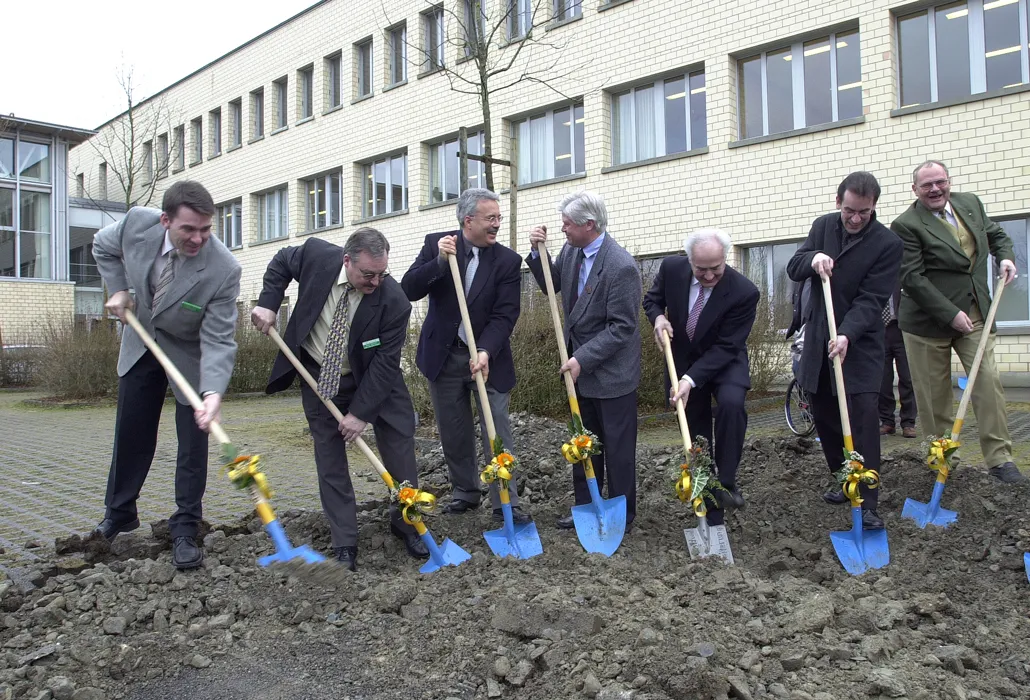
Ground-breaking ceremony for the extensions
Guests from all over the world
During the first decade, the clinic, which was hoped by its embittered opponents to “fall to ruins”, began to build a shimmering reputation for itself, both in Switzerland and beyond. The SPC regularly welcomed magistrates as well as key figures from business, science, culture, show business and sport. Paraplegia professionals from all over the world gathered in Nottwil for conventions. Thousands of visitors flocked to the Lake Sempach region for open houses. All this buzz left a lasting impact on the centre, not only with regard to its personnel statistics, number of beds/care days, budgets and organisation, but especially to its ability to enhance the care it offered to people with spinal cord injuries.
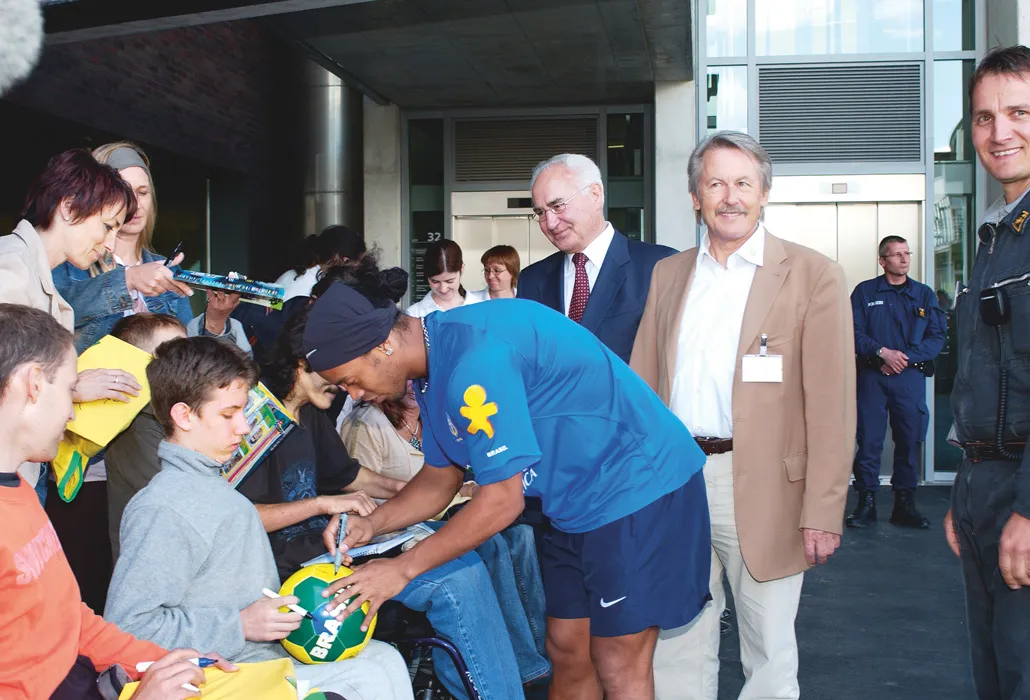
The SPC regularly welcomed magistrates as well as key figures from business, science, culture, show business and sport.
The Brazilian National Football Team in Nottwil
International guests at the SPC
The SPC stands for innovation
Boasting a pain clinic, state-of-the-art diagnosis equipment and new surgical techniques, the SPC has never shied away from innovation. The SPC was the first centre in Europe to provide treatment to tetraplegics using the Freehand System. In the neuro-urology department, more and more babies were born to happy parents living with spinal cord injuries. Patients no longer needed to lug poster-sized x-rays under their arms... such images were transmitted online in a flash. The SPC is home to one of Switzerland’s very first EOS x-ray machines. This machine is used to produce 3D images. Examinations are done with the patient standing, or sitting in one of the SPC’s specially designed chairs, which provide great relief for people with spinal cord injuries. The clinic also has an exoskeleton which it uses for medical and therapeutic purposes. And in the pharmacy, a medicine-distributing robot supplies patients with their medications.
Just like other healthcare institutions, the SPC faces increasing administrative costs for its medical staff, as well as ongoing operational fees and pressure from its sponsors to save money.
Magnet hospital
Being named a magnet hospital is no small matter. An even bigger challenge lies in remaining one. To do so, the SPC must continue to offer superior and modern medical/therapeutic services in the areas they know best, and develop related fields based on the latest innovations:
- Weaning from mechanical ventilation
- Treatment of musculoskeletal pain or paraplegia in the elderly
- Special surgery (Tetrahand)
- Professional assistance with workforce reintegration

SPC milestones
- 1979
Die Ernst Göhner Stiftung stellt in Risch (ZG) Land für den Bau einer Spezialklinik für Querschnittgelähmte zur Verfügung
- 1984
Die Bürger der Gemeinde Risch lehnen die Umzonung ab.
- 1985
Bewilligung Umzonung von Industrieland in eine Spezialzone für klinische und therapeutische Zwecke in Nottwil (LU) durch die Gemeindeversammlung
- 1987
Grundsteinlegung und Spatenstich, Beginn Bau des Schweizer Paraplegiker-Zentrums
- 1988
Aufrichtefest
- 1990
Eröffnungsfest und Inbetriebnahme der Spezialklinik
- 1998
Einweihung Erweiterungsbauten (dritter Pflegetrakt) und Eröffnung des Zentrums für Schmerzmedizin
- 2000
Rücktritt von Guido A. Zäch als Chefarzt
- 2003
Einweihung Erweiterungsbauten (Brücke, Nordwesttrakt)
- 2005
Rücktritt von Guido A. Zäch als Direktor
- 2006
Eröffnung Swiss Prevention Center und erste Durchführung Publikumskongress «Gesundheit»
- 2007
Vertrag über öffentlich-rechtliche Partnerschaft mit dem Luzerner Kantonsspital (LUKS), Gründung Schweizer Wirbelsäulen-und Rückenmark-Zentrum (SWRZ)
- 2008
Gründung Radiologie Luzern-Land AG (Ralula)
- 2013
Gründung Swiss Society of Paraplegia (SSoP)
- 2015
Spatenstich Erneuerungs- und Erweiterungsbauten
- 2020
Geplante Eröffnung Erneuerungs- und Erweiterungsbauten
Additional information
1975
Creation of the Swiss Paraplegic Foundation
Early 1970s: While working as a junior doctor at a rehabilitation clinic in Basel, Guido A. Zäch got a first-hand look at the desperate situation endured by people with spinal cord injuries. He began to seek out new ways to provide these patients with the care they needed. It was this drive that resulted in the creation of the Swiss Paraplegic Foundation (SPF).
Back then, people with spinal cord injuries were faced with an alarming lack of medical and treatment services, ignorance regarding their condition and a strong possibility that they would not survive. For insurance reasons, it took at least one year before a patient could return to their daily life. People in wheelchairs, living on the margin of society, were seen as welfare cases.
“My name is Zäch and I’m one too!”
Guido A. Zäch
A vision with a future
Authorities and those in high-up positions wanted to maintain the status quo. Dr. Zäch, therefore, decided to take matters into his own hands.
To use his own money to create a foundation for people with spinal cord injuries. A not-for-profit organisation that rested on the support of a benefactor’s association.
The concept was based on solidarity, or “a reward for personal contribution”.
Every paying member received an immediate support payment if they were involved in an accident that resulted in a spinal cord injury. In addition, funds were made available for loved ones who dedicated their lives to caring for those who were injured. A special pension plan, if you will, to help out in the future. Less than a year after the foundation’s creation, 50,000 names had already been recorded in its membership directory.
No money, no foundation!
To raise funds, the founders had to be both creative and committed:
- Evening rounds with the slide projector at Samaritans and women’s associations
- Selling planners, bath towels, silk scarves, calendars, watches and torches
- Selling handmade teddy bears in wheelchairs
- Selling envelopes with special stamps and first-day covers
- Holding benefit events such as the advent concert, where visitors were kindly asked to contribute to the small collection at the front door
Fellow citizens also showed initiative: pupils sold their own home-made Christmas biscuits. Formula One drivers and Swiss “Schwingen” wrestlers organised ski races to benefit paraplegics and, and, and...
In less than 25 years, the Swiss Paraplegic Foundation became a household name that those in the healthcare industry – as well as the public – could trust. Since then, it has occupied a permanent place at the top of the list of Switzerland's best relief organisations. Today, the SPF is the second-largest foundation in Switzerland, with around 1.8 million members.

“Thanks to Guido A. Zäch and his successors promoting their vision for the comprehensive treatment and reintegration of people with spinal cord injuries, the Foundation has earned the highest respect, both in Switzerland and abroad.”
Dr. Markus Dürr, former President of the GDK (Swiss Cantonal Health Directors Conference)
Comprehensive support
The Foundation was committed to providing Swiss-wide support to all people living with spinal cord injuries – as well as corresponding institutions – during times of hardship. As a result, the Foundation received countless applications for financial aid for everything from assistive devices to the conversion of vehicles, apartments and offices. The SPF honoured these requests and much more:
it paid healthcare costs that were not covered by insurance, published academic literature, organised conferences, launched special projects for patients and held continuing education classes for doctors and medical staff.
End of the pioneering era
Just as it was thriving, the Foundation was rocked by a messy legal dispute. The conflict kept advocates of the SPF, the courts, solicitors as well as the media busy for a very long time, and officially put an end, after almost 33 years, to the pioneering era initiated by Guido A. Zäch. After the dispute, a new management team made plans to modernise the company. There was no doubt that there was need for a change. But too much was taken on too quickly, and all at the same time. The ambitious undertaking unravelled the tightly-knit structure of the Swiss Paraplegic Foundation (SPF), and ultimately failed. Once the plan was abandoned, a patient took over for the first time as the President of Board of Trustees. Little by little, he was able to restore peace and order, and get the SPF back on its feet.
“In Nottwil, highly-qualified and enthusiastic employees perform outstanding work day in and day out to help people with spinal cord injuries and other spinal injuries or diseases. I take my hat off to them!”
Konrad Graber, Council Member of the Canton of Lucerne
Foresight, courage and constant motion are the hallmarks of the SPF. The SPF has played a hugely important role in the national healthcare and not-for-profit sectors, as well as in the corporate landscape of Central Switzerland.
Milestones
- 1975
Gründung der Schweizer Paraplegiker-Stiftung (SPS)
- 1977
Erste Ausgabe des Magazins «Paraplegie»
- 1978
Gründungs- und erste Mitglieder-Versammlung der Gönner-Vereinigung
- 1979
Einführung des Unterstützungsbeitrages für Mitglieder der Gönner-Vereinigung
- 1980
Gründung Schweizer Paraplegiker-Vereinigung
- 1982
Gründung der Schweizerischen Stiftung für elektronische Hilfsmittel (FST)
- 1994
Gründung der Orthotec AG
- 1998
Erste Durchführung der Fachmesse «Rollivision»
- 1999
Gründung der Paramobil AG
- 2002
Rücktritt von Guido A. Zäch als Präsident der Gönner-Vereinigung
- 2003
Gründung des Schweizer Instituts für Rettungsmedizin (SIRMED)
- 2003
Gründung des Vereins ParaHelp (heute ParaHelp AG)
- 2003
Spatenstich zum Bau des Guido A. Zäch Instituts (GZI)
- 2005
Einweihung und Eröffnung des Guido A. Zäch Instituts (GZI)
- 2007
Rücktritt von Guido A. Zäch als Präsident des Stiftungsrates
- 2012
Erwerb des Hotels Sempachersee (HSS)
- 2013
Gründung der AWONO AG für altersgerechtes und hindernisfreies Wohnen in Nottwil
- 2015
Beginn der Bauarbeiten zu den Erweiterungsbauten des SPZ
Werden Sie jetzt Mitglied und erhalten Sie im Ernstfall 250 000 Franken.

